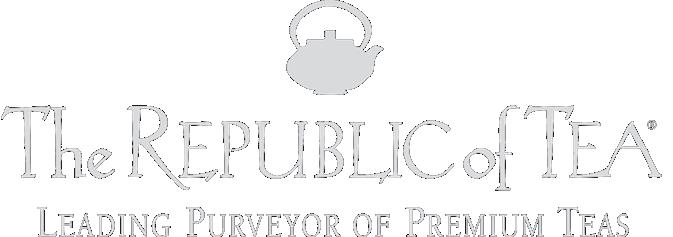Syracuse University School Of Architecture
WID and NOMAS Present

Syracuse University School Of Architecture
WID and NOMAS Present
From the 2004 Alumni Class
February 25, 2025
In 2004 a small group of female graduates walked out of Slocum Hall and entered a profession that we commonly refer to as our practice. After twenty years, we have continued to use this language because we know that perfection or completeness is not how one measures growth in this field or in these women. Instead, these women have become respected leaders and peers in their communities by offering a multitude of skills, personalities, and experiences to strengthen and positively impact our field and beyond.
As we celebrate the achievements of our peers, we must also recognize that female leadership is still the exception and not the rule in our profession. Known as the missing 32%, these women sit within a cultural context that reflects the significant gap of equitable and balanced male/female leadership still present today. Though we may not be able to dive deeply into the data here, we hope to observe and understand this framework through the stories that are told.
The pages ahead offer a glimpse into their journeys, including some candid and personal insights. We appreciate their openness in sharing these reflections, which help us understand the diverse paths they have taken and the opportunities and challenges they have faced.
We are truly excited to recognize and honor these women tonight.
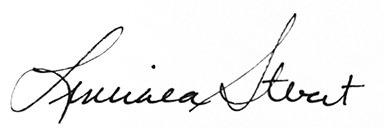
Principal Architect Arch11
Architect / Contract Administrator
www.nelsenpartners.com
Lesha Blair is an architect at Nelsen Partners with experience in design, construction administration, and project management. Her problem solving abilities, strong organizational skills, and keen attention to detail are essential to ensuring the quality of our projects. Lesha will contribute her team-player attitude to your projects while always striving to complete projects accurately, on schedule, and within budget. In addition to residential projects, her project experience includes office, educational facilities, multi-family housing, and retail stores.
For over 30 years the leaders of Nelsen Partners have worked together on projects throughout the US and around the world, providing architecture, interiors, planning, and urban design services for projects ranging from mixed-use developments and master-planned urban centers, to retail developments, office buildings, residential towers, hotels, performing arts venues, and restaurants.
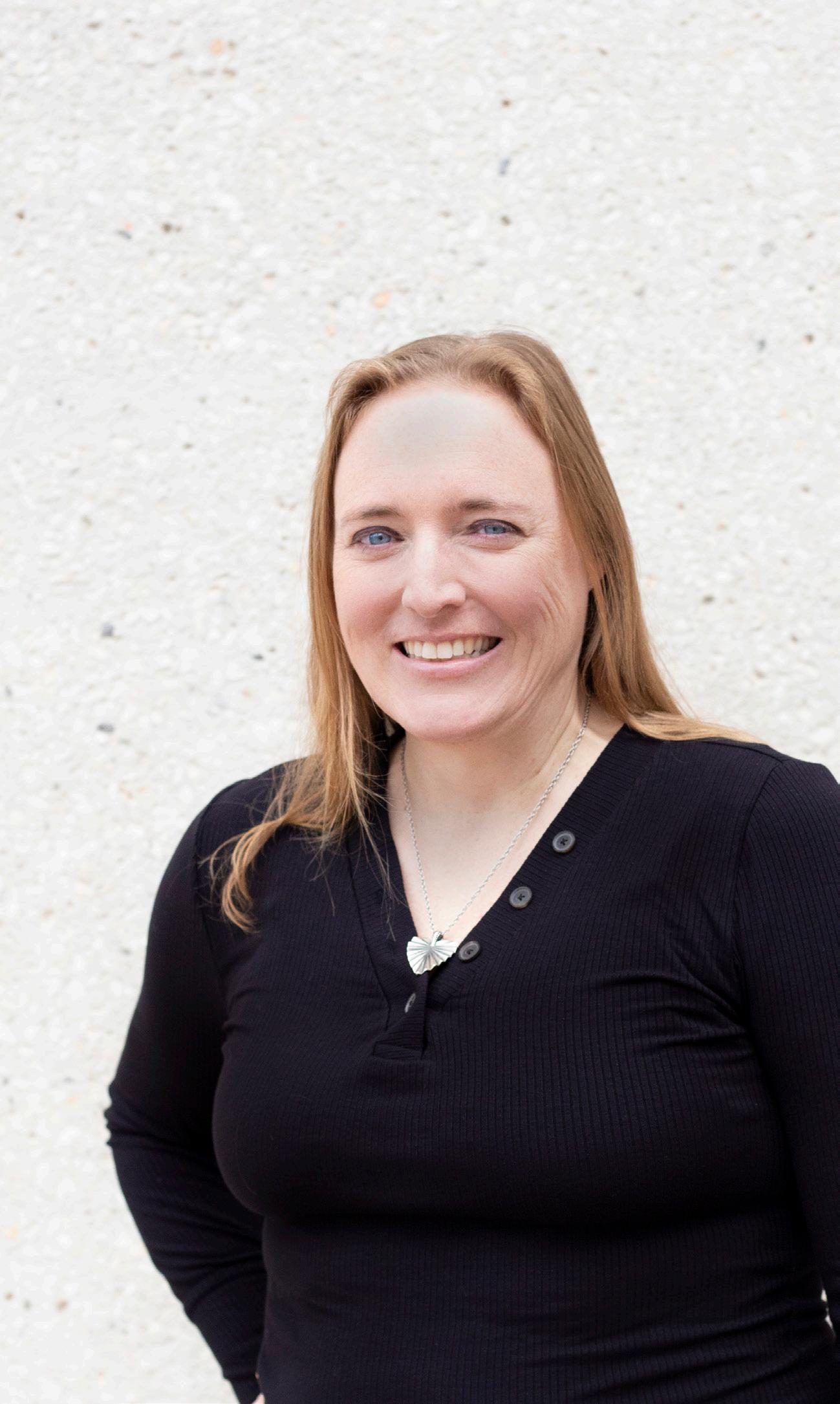


Identify a personal trait that has been an asset in your path to leadership. - Empathy
Identify a personal trait that may hinder your path to leadership. - Risk-averse
Briefly describe 1-2 key professional moments in your life that placed you in the leadership position that you are in today.
It was when I became a job captain at my first job out of school. It was my firstc experience leading older colleagues with more experience. It gave me insight on how others with different backgrounds work, and I learned how to manage them.
In 2014, I transitioned to my current role doing contract administration, and I had to start working with people with a lot of different players. GCs, ownership as well as design team members from different companies.
Briefly describe 1-2 key personal moments in your life that impacted your path to leadership.
In 2005 and 2006 I went through some difficult deaths in my family, it really gave me more perspective that we really do not know what hardships others are going through and as easy as it is to get sucked into work and stress about deadlines there are MANY other things that are more important.
In 2009, I was laid off from my firm. I ended up working as a sole practitioner for a few years while I completed my MBA.
As you have grown into your leadership position, how do you find you have been treated differently than before? How have you been compelled to treat others differently due to your leadership role?
I think now that I have been in my current role for 10 years, I can look back and see that I have a lot more trust from my colleagues. I don’t feel like I need to argue my case as much anymore. When working with younger staff, I try to ask for their opinions on certain design items and allow them to have ownership when appropriate, showing that I trust their opinions.
Were you always interested in pursuing a leadership/management role within the workplace? How does it differ from more traditional designer roles and how did you know it was fit for you?
Yes. I was always interested in pursuing a leadership management role. I think this type of role differs from being a designer in that there are more complex situations to manage. You get to work with all different players in the building process, each with a different personality and different obligations to the architect. Many times that in itself is like a puzzle not unlike the design of the actual building. I have always enjoyed problem solving and puzzles.
What are the key leadership skills you believe every woman should develop to succeed in her career?
By far, I think communication skills are the most important. No one ever tells architects that they are probably going to write emails more than they are going to draw. Being able to communicate ideas effectively is going to help your career greatly. As a woman, you may need to repeat yourself, but if you have a clear message it will resonate with others who may in turn bolster the discussion.
What do you look for when building a team and what characteristics make for an effective young leader?
Aside from the obvious “hard-working and determined and motivated” character traits. I look for people who are willing to listen to other teammates’ ideas. People who are flexible and are truly working for the betterment of the team project.
Follow your dreams, but don’t feel bad if your original dream changes. You are young enough now that any moves you make will be much easier than when you are more established in your career. There are many opportunities for architects outside of the traditional architecture firm and there are many networking opportunities for you to find them. Get licensed as soon as possible. It is much more difficult when you have a family and more intense work obligations.
Natasha Coyle
MaMo creates bespoke spaces by uniquely connecting nature and history. Through a collaborative design process that emphasizes timeless simplicity, our projects combine inspiration and comfort.
Our concepts arise from openended design investigation without restraints. The freedom to explore our intuition leads us to new expressions of form, materials, textures, colors, and light. It takes us along a creative path that results in new objects, architecture, and strategies.
Crafted with enduring luxury, our architecture listens to the client and the site. It embodies our experience, takes lessons from history, and recognizes current building science. We distill ideas down to their essence, making homes that are grounded in place.
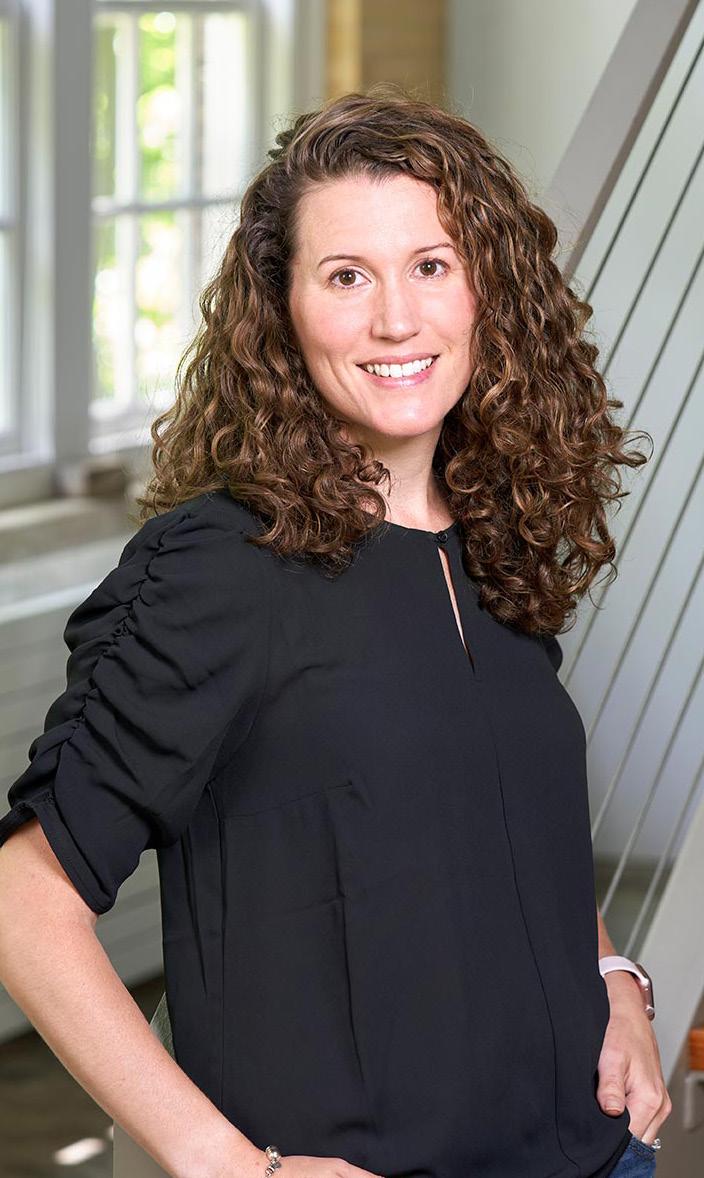


Identify a personal trait that has been an asset in your path to leadership. - Resourceful
Identify a personal trait that may hinder your path to leadership. - Inarticulate
Briefly describe 1-2 key professional moments in your life that placed you in the leadership position that you are in today.
August 2007 - August 2009:I had the opportunity to be part of a multi-million-dollar, multi-structure residential project alongside an internationally recognized design team. The exposure I gained in design, project management, and people management helped set me on the path to leadership.
June 2020: Becoming a business owner was a pivotal moment in my journey toward leadership. The responsibility that accompanied this role pushed me beyond my comfort zone, teaching me that a true leader doesn’t have all the answers but is humble enough to seek out the right ones.
Briefly describe 1-2 key personal moments in your life that impacted your path to leadership.
December 2012: Motherhood has been a key driver in my leadership journey. Through daily problem-solving, multitasking, and scheduling, I’ve realized that leadership is shaped in life’s everyday moments. By embracing these personal experiences, one can gain confidence and insights that go beyond their professional expertise.
March 2017: Returning to work after having my last child marked a significant turning point. I made the personal decision to take six months off with each of my three children, and coming back from my final maternity leave allowed me to fully invest in helping to create a brand.
How did you practice self-advocacy in the workplace as a young designer? How did you find balance between standing up for yourself and being vocal about your personal career goals versus knowing when to step back and be patient?
Self-advocacy can be challenging as a young designer, especially when balancing hard work with the need to speak up when it goes unrecognized. It’s crucial to distinguish between being given opportunities to grow and being taken advantage of. My advice: trust your instincts and clearly communicate why you deserve the next level of compensation or responsibility during performance reviews. If those reviews aren’t scheduled, take the initiative to request one.
Were you always interested in pursuing a leadership/management role within the workplace? How does it differ from more traditional designer roles and how did you know it was fit for you?
Leadership wasn’t always part of my career vision. However, working at small firms early on, I had the unique opportunity to simultaneously hone my management and technical skills. Being involved in every phase of a project gave me a comprehensive understanding of how a project comes to life. This immersive experience sparked my passion for the dynamic role of both project and firm management. Ultimately, it was my commitment to delivering the best possible experience and design for clients that led me to realize that a leadership role would allow me to share my knowledge and guide the next generation of designers.
What are the key leadership skills you believe every woman should develop to succeed in her career?
Confidence: It’s necessary to overcome obstacles and trust in your abilities. Communication: As we work in a service industry, strong communication is crucial to understanding and advocating for our clients, whether interacting with subcontractors, suppliers, or fellow designers. It’s equally important to confidently share your own ideas. Problem-Solving Mindset: Architecture is fundamentally about solving problems. It’s essential to view challenges as design opportunities, not roadblocks. Humility: No one has all the answers. A good designer and leader listens, recognizing the strengths of each team member and fosters a collaborative and positive environment. Resilience: Grit is essential to navigate the professional and personal challenges that you will face. Unconscious bias, societal expectations, personal expectations and your own inner critic are sure to create adversity along your journey.
What do you look for when building a team and what characteristics make for an effective young leader?
When building a team, I focus on creating a group with diverse strengths. This not only fosters a strong, collaborative dynamic but also offers everyone the opportunity to learn and grow. Team members who are curious, hardworking, and forward-thinking naturally excel and develop into strong leaders.advice, and follow up consistently.
www.vancleefarpels.com
Van Cleef & Arpels is a luxury jewelry retailer founded in 1896 in Paris. The company is owned by Richemont, a Switzerland based luxury goods holding company. The VCA corporate office in New York operates the standalone retail boutiques and regional offices networks in Canada, US, Mexico, and Brazil.



Identify a personal trait that has been an asset in your path to leadership. - Understanding
Identify a personal trait that may hinder your path to leadership. - Perfectionist
Briefly describe 1-2 key professional moments in your life that placed you in the leadership position that you are in today.
2015: Leaving the “consulting” side of architecture and moving to the “client” side. This move gave me many more opportunities to really lead projects than I had while working in an architecture firm.
2019: Promotion to Director at Equinox, which gave me a true leadership position within the Architecture and Planning department and exposure to many business decisions that I had not been privy to beforehand.
Briefly describe 1-2 key personal moments in your life that impacted your path to leadership.
2005: Moving to NYC, which allowed me greater job opportunities and gave me exposure to local professional organizations in our industry.
2007 - Completing my ARE exams and receiving my license in NY State. Although I no longer work in a traditional architecture firm, it’s an accomplishment that cemented my commitment to the profession. No matter what my job is, being a registered architect will always be part of my personal and professional identity
What is the most rewarding part of being a woman in a leadership position?
The most rewarding part of being a woman in a leadership position is being able to mentor other young women in the profession. I’ve hired quite a few young women in the past 10+ years. While managing and guiding these young women, each has helped me grow my leadership position and make me a better leader. Mentoring others from different generations has both challenged and helped me as a leader - understanding that the younger generations have different habits in the workplace, and being able to adapt to and mold those habits contributes even more to my leadership skills.
Were you always interested in pursuing a leadership/management role within the workplace? How does it differ from more traditional designer roles and how did you know it was fit for you?
Yes, I was always interested in a leadership role in the workplace. I knew it was the right path for me, because I knew it would continue to keep me engaged in my work and the profession.
What are the key leadership skills you believe every woman should develop to succeed in her career?
A key to building leadership skills is to find a successful female leader in your office or organization and build a relationship with that woman. I’ve succeeded due to a strong female leader that I worked under for almost 9 years of my career, and I really learned by observing her skills and how she dealt with others in the organization, as well as how she dealt with difficult situations. Her mentorship really molded me into the leader that I am today.
What do you look for when building a team and what characteristics make for an effective young leader?
I look beyond the qualifications on a resume when hiring on my team, as I really want to surround myself with people that I genuinely like to be around. I typically ask myself, “Do I like this person? Do I want to work with this person and want them reporting to me?” Those questions can typically be answered quite quickly and always guide me with building a team.
Principal
www.mgaarchitects.com
Robyn is a principal and project architect with Marcus Gleysteen Architects, bringing over 20 years of experience in custom residential and boutique commercial-interior projects. She has led many of the firm’s most successful and acclaimed projects, with several winning awards and being featured in New England Home, New Hampshire Home, Boston Magazine, AIANH Forum, Residential Design, and on This Old House. In 2024, two of her projects won AIA awards for excellence in architecture design. A graduate of Syracuse University with a Bachelor of Architecture, Robyn joined MGa in 2004. She is an AIA member and NCARB certified. Robyn mentors staff, developing their technical and design skills, and plays a key role in the firm’s marketing efforts. Beyond her work at MGa, Robyn has volunteered with her hometown’s historical commission and participated in design reviews at the Boston Architectural College and AIA. She currently volunteers as a leader with BSA Cub Scouts. Originally from the Berkshires, Robyn now resides in the Boston-area with her family. In her free time, she enjoys exploring, biking, building Legos with her young sons, skiing, and discovering new restaurants.
MGa is a custom residential design firm that encourages fresh and critical perspectives when designing projects in order to meet the objectives and desires of their clients. They seek to enrich the evolving conditions of daily life through meaningful design, and their work is defined by a commitment to beauty, craft, and performance.
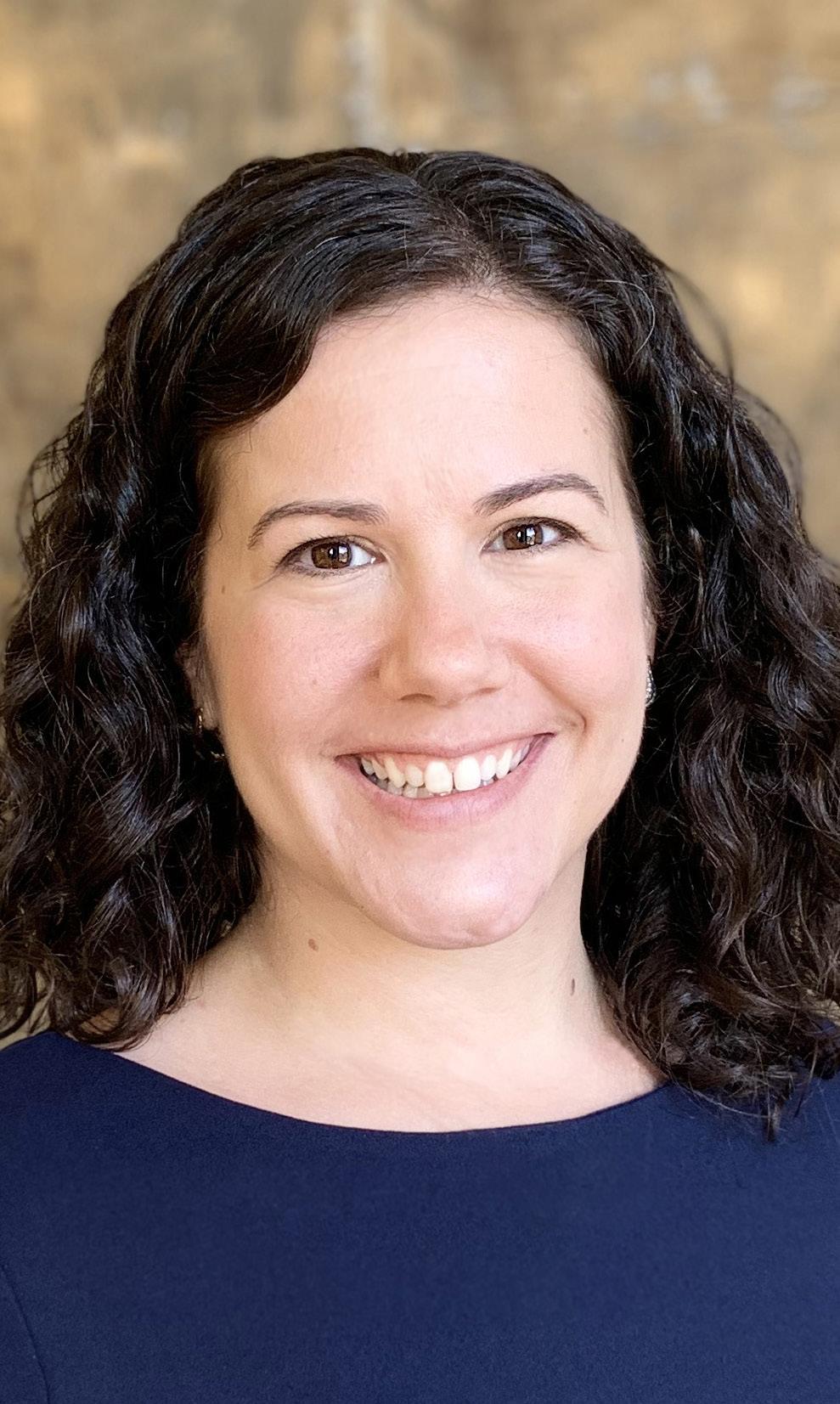

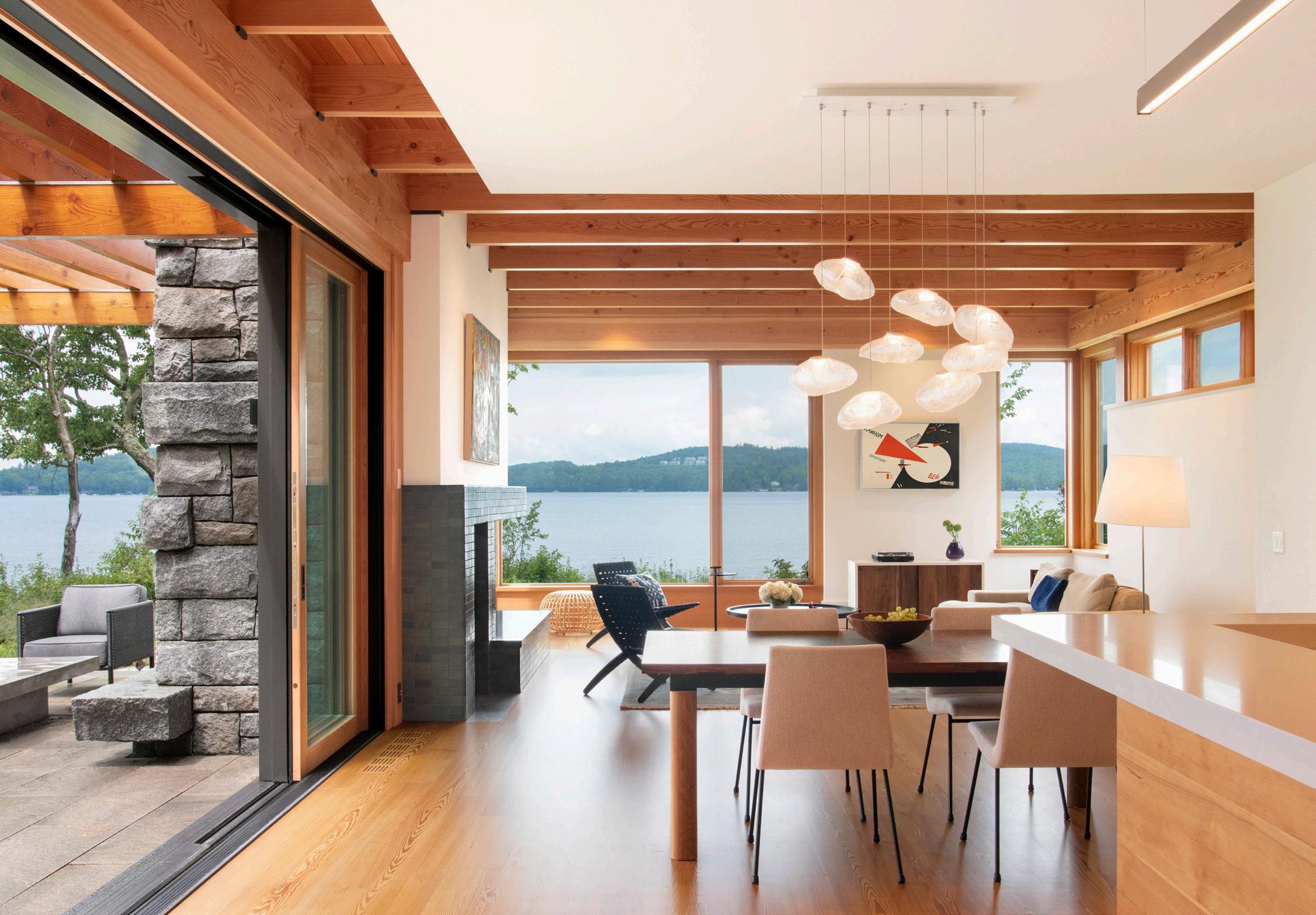
Identify a personal trait that has been an asset in your path to leadership. - Integrity
Identify a personal trait that may hinder your path to leadership. - Careful
Briefly describe 1-2 key professional moments in your life that placed you in the leadership position that you are in today.
2010 - Studied for the ARE during the recession slow-down in 2009, and became a licensed architect in 2010.
2017 - Promoted to Principal, while on maternity leave with my second child.
Briefly describe 1-2 key personal moments in your life that impacted your path to leadership.
Dec 2014 - Became a Mother, and continued to work full-time.
Share a defining moment in your career journey that shaped your approach to leadership.
During the years when our office operated fully remote, I embraced the opportunity to overcome the challenges of COVID isolation and an increased workload. I dived into continuous learning through webinars on various topics, including leadership and management. This not only boosted my skills in managing and mentoring staff but also helped me maintain strong, positive relationships with clients and builders.
Were you always interested in pursuing a leadership/management role within the workplace? How does it differ from more traditional designer roles and how did you know it was fit for you?
At our small office, we all take on various roles, creating a lively and hands-on environment. Leadership naturally evolves from growth and experience. I love sharing my expertise with younger staff and have always envisioned myself as a firm leader. Even in a designer role, leadership is an essential aspect of being an architect, working collaboratively with clients and builders. I wasn’t always certain that this role would be a fit for me, but I embrace the journey of learning and practicing these skills to eventually own or transition into owning a firm in the future.
What are the key leadership skills you believe every woman should develop to succeed in her career?
A few key leadership skills include:
Setting Boundaries: Being true to yourself and your organization, and adhering to your values. Determining Priorities: Focusing on what is both important and urgent first, while also remembering to address what is important but not urgent. Being a Compass: Guiding others in a supportive and encouraging manner. Being Accountable: Taking responsibility and being someone that others can trust.
What do you look for when building a team and what characteristics make for an effective young leader?
My ideal team members possess insight, accountability, and creativity. An effective leader demonstrates great communication skills, both verbally and visually.
Every now and then, take a moment to reflect and identify areas where you can grow Real progress comes from within! Don’t rely on outside forces to map out steps or provide checkboxes—you are the designer of your own life.
Site Architects
Architect
www.site-architects.com
Erica was a project architect with CCY Architects in Basalt, Colorado for 12 years after graduating from Syracuse University in 2004. At CCY she was involved in many high end residential, multifamily and hospitality projects and found a passion for interior design in addition to architecture. The high end nature of CCY’s projects allowed for thoughtful detailing and integration of materials which she translates into her more budget conscious projects today. Erica is honored to have been part of the CCY team that executed Shigeru Ban’s Aspen Art Museum as Architect of Record.
In 2015 Erica co-founded 2757 design co with a strong passion to design affordable housing in the unaffordable mountain community she had been living in since college. Erica saw the critical need for architects to support thoughtful and economical design in both larger workforce housing projects and smaller ADU’s (accessory dwelling units) and renovations for primary residents as cost of construction continued to soar.
Erica founded Site Architects in 2023 prioritizing non-profit design work in addition to workforce housing. The passion for non-profit work was ignited by her multiple projects with Habitat for Humanity and a collaboration with the non-profit, Response, that will finish construction in early 2025. The Diane and Bruce Halle Center for Hope & Healing will provide a permanent office space for Response as well as seven shelter rooms that will serve as critical temporary housing for survivors of domestic and sexual abuse. Site Architects leads a Site-First approach on all projects.
Site Architects is an architecture and design firm inspired by the unique attributes of SITE and the functional and aesthetic vision of our clients. We form trusted client relationships from the initial planning & budgeting stages through the construction process. We are passionate about finding elegant, budget conscious and sustainable solutions that blend with their natural environment. We initiate transparent and tough discussions about the environmental, social and economic impacts of each construction project to determine if progressing a potential project on its suggested SITE is a responsible decision.
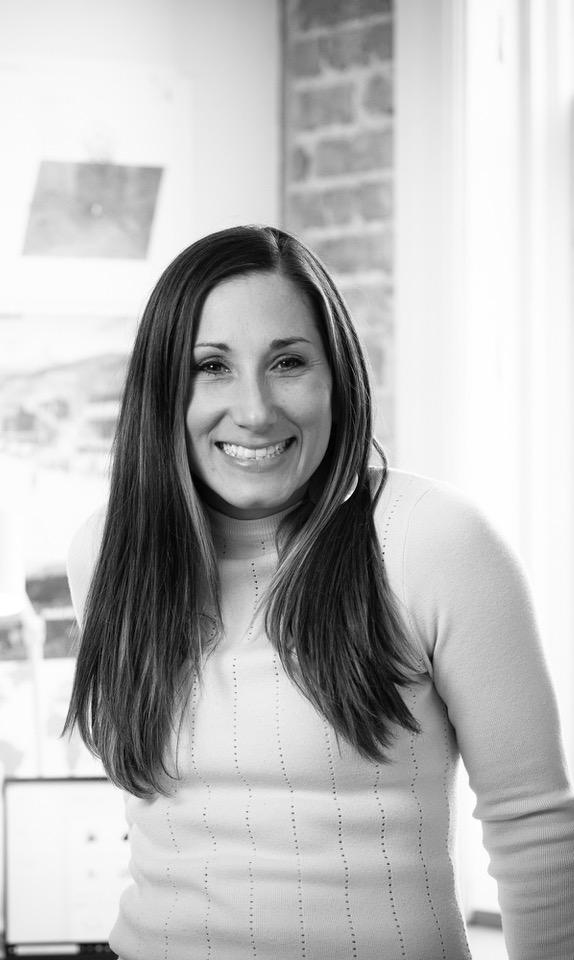
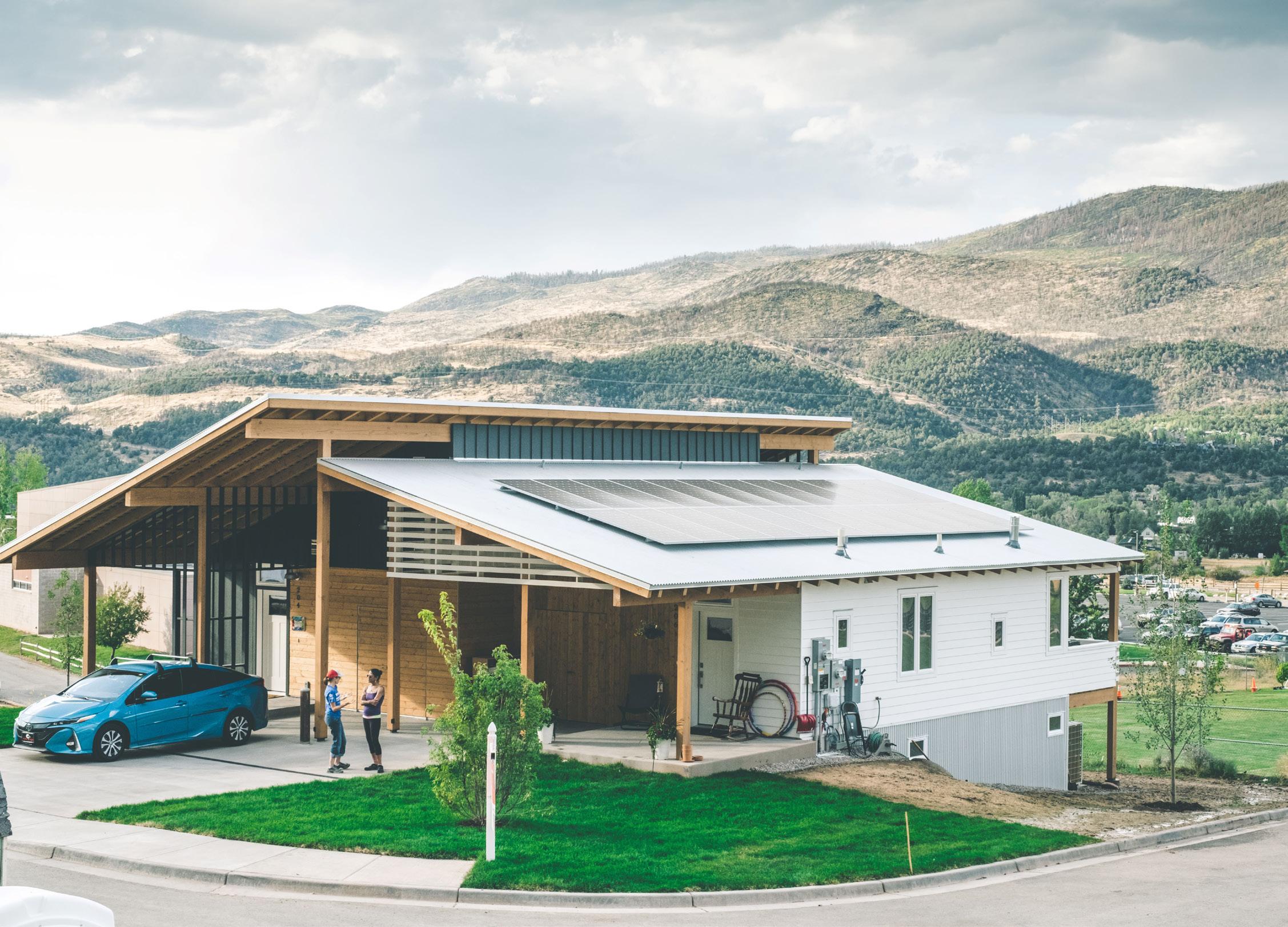

Identify a personal trait that has been an asset in your path to leadership. - Engaged
Identify a personal trait that may hinder your path to leadership. - Humble
Briefly describe 1-2 key professional moments in your life that placed you in the leadership position that you are in today.
2015: Cofounded an Architecture Firm focused on addressing the workforce housing shortage in the state of Colorado.
2023: Founded an Architecture Firm specializing in responsive and responsible Site and Architectural design work for non-profits and communities in need of housing solutions.
Briefly describe 1-2 key personal moments in your life that impacted your path to leadership.
2014: Became a mother of twin daughters and realized that both my perceived value as an employee had changed and that I did not value the type of work that I was designing.
2023: After continuing to successfully comanage an architecture firm for three years following a divorce from my business partner, I decided that being “fine” with the partnership was not how I wanted to describe the remainder of my career, so I made a change.
How did you practice self-advocacy in the workplace as a young designer? How did you find balance between standing up for yourself and being vocal about your personal career goals versus knowing when to step back and be patient?
While VERY pregnant with twins, I learned from a coworkers wife (who was also pregnant) that her husband had received a promotion about 6 months prior. After initially hiding out in the bathroom and crying ... I spent time comparing myself to my coworker in terms of tenure (12 years), projects I was managing and firm contributions in leadership and culture. When I approached the firm leadership about why I had not been promoted along side my coworker given my similar (and greater) contributions, they indicated that it had “not even crossed their mind” that I would be interested in that role. The female architects, who became mothers, before me at that particular firm had chosen different career paths after they had children. While I changed significantly when I became a mother, my drive for leadership did not waiver. Upon further reflection, they did promote me, but it became clear that I might not be in the right place so I soon made a change.
As you have grown into your leadership position, how do you find you have been treated differently than before? How have you been compelled to treat others differently due to your leadership role?
When I first cofounded an architecture firm at the age of 34, I knew that I might have challenges with respect for my level of experience and I was ready to prove myself. Ten years later at the age of 44, I am questioning if the respect challenges are rooted more in gender than age. A trusted staff member of mine is 20 years my senior and still struggles to receive the level of respect she deserves. I continue to personally reflect on how to mentor younger female staff members on this topic. Do we continue to put our heads down and “Be so good they can’t ignore us” or do we find ways to speak up more loudly ... how do we differentiate lack of respect due to age and experience from lack of respect due to gender?
Where do you see the greatest opportunities for improving and supporting women in reaching a leadership position in this field?
At Syracuse University, I took a Business Plan writing class and I wish I had taken more business and finance classes to support understanding how to successfully create and manage an architecture firm. Professional Practice class was certainly helpful but was difficult to fully apply until I was working in the field and gaining on the job expose to the concepts covered in the class. Perhaps integrating more general business and finance into Professional Practice and inviting guest speakers who are women in leadership to speak as guests would be helpful.
Question A: What advice would you give your 21-year-old self?
In your last years of school and when you first start your career, continue to involve yourself in extracurricular (nonarchitecture) courses and activities that help you gain confidence in communication and building relationships. Leadership is rooted in effective communication (spoken, written and drawn) and strong relationships with people inside and outside of the architectural profession - you can develop these skills in so many fun ways.
Senior Principal
www.smithgroup.com
Designing projects across multiple practices including workplace, healthcare, science & technology, and higher education, Laura says she’s drawn to “finding creative solutions to a client’s distinct problem.” “I enjoy the technical challenges and exploration of cutting-edge technologies but, at the same time,” she adds, “my passion is human-centered design: creating spaces that promote wellbeing, encourage new ways of working, and have a positive impact on everyone who interacts with them. The human experience is constantly evolving, so designing spaces for people should never be stagnant.”
Whether helping her clients, team members or a consultant, Laura feels a great sense of accomplishment when she can make someone’s life a little more manageable. She is devoted to working closely with clients to understand and serve all their project needs. As a Senior Principal, Laura combines her technical expertise as an architect with her project management skills to ensure her projects run smoothly and are successful for all project stakeholders, helping to ensure affordability, feasibility, longevity, and client satisfaction. Laura also served three years as co-chair of the Boston Society of Architect’s IPD / Lean Roundtable and is passionate about streamlining project delivery by working closely with all team members to find the most effective processes.
SmithGroup has a rich history of providing architectural services that span over 171 years, with a strong emphasis on integrated design and engineering. Our approach to architecture is centered on the belief that it has the extraordinary power to shape daily experiences for the better by fostering interaction, offering comfort, encouraging discovery, and bringing joy to people’s lives. We bring together diverse minds— including clients, user groups, construction teams, and our integrated team of specialists— to craft a shared vision that leads to unique and beautiful solutions for each client. This collaborative process ensures that our designs are not only aesthetically pleasing but also functional and sustainable, enhancing the overall quality of life for users.
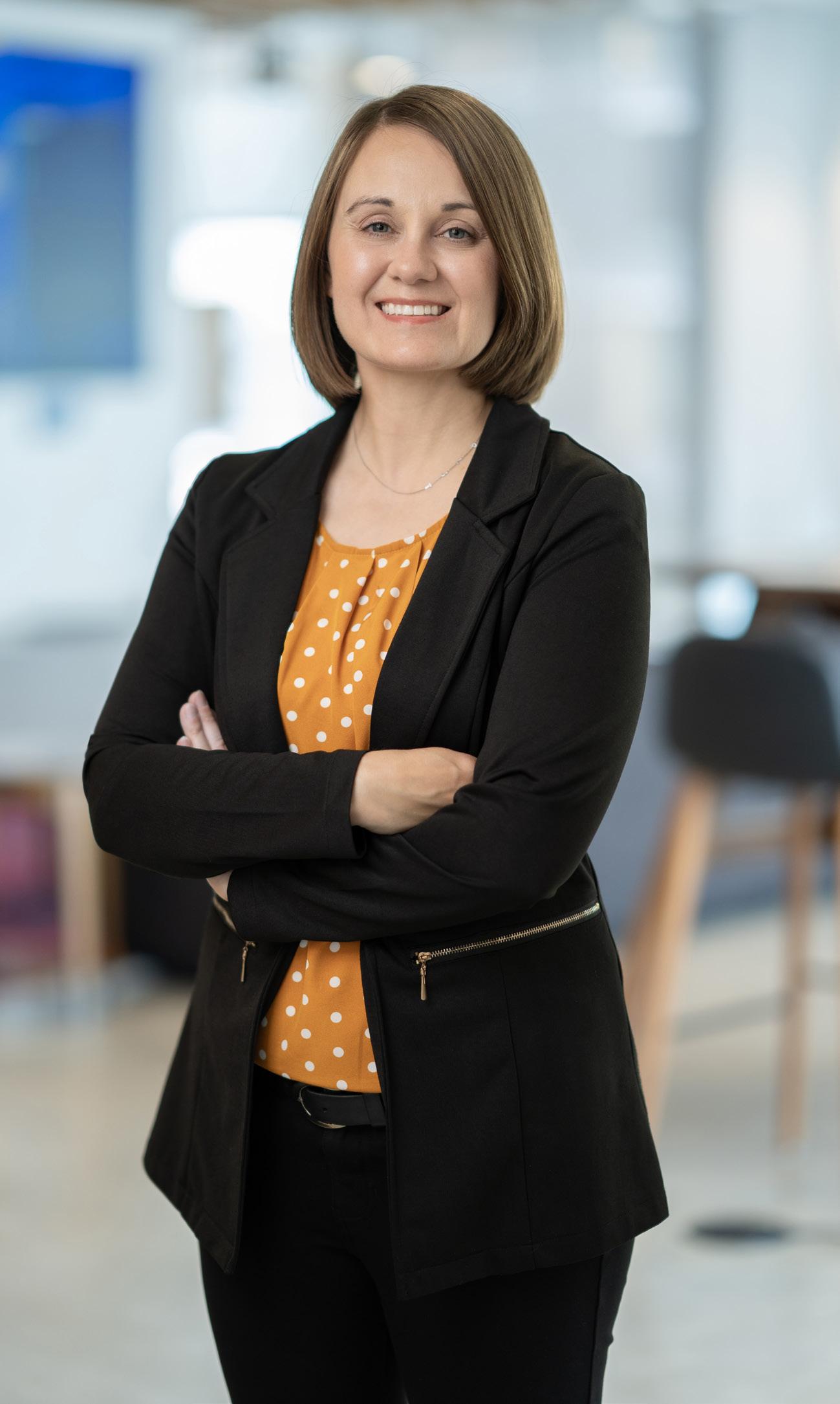


Identify a personal trait that has been an asset in your path to leadership. - Unflappable
Identify a personal trait that may hinder your path to leadership. - Reticence
Briefly describe 1-2 key professional moments in your life that placed you in the leadership position that you are in today.
Adopting Revit in 2004 when it was still a new software lead me to become an early BIM expert and leader in my firm. I was involved in establishing our standards, speaking at conferences, and engaging in proposals. I was promoted to Associate in 2008, partially in recognition of those contributions beyond project work.
The merger of my firm with SmithGroup in 2018 opened many doors for me to broaden my experience. It allowed me to embrace my inclination towards being a generalist architect, expanding beyond my previous focus on Healthcare.
Briefly describe 1-2 key personal moments in your life that impacted your path to leadership.
Engaged in 2007 in Las Vegas when I was traveling for a BIM Conference and my now husband flew out to turn the work trip into a vacation and surprise me with a proposal.
2013 birth of my first child. The return to work was challenging and I considered leaving architecture to transition to the owner side with a focus on BIM management but I did not want to give up architecture and instead refocused on project work.
What is the most rewarding part of being a woman in a leadership position?
Being recognized as a role model has been the most rewarding part of being a woman in leadership. When other women reach out to me for guidance as they start their own families and navigate balancing work and the demands of parenthood, I feel that sharing my experience can truly make a difference. It’s important to me to be approachable, which means being open about my own vulnerabilities. I take great joy in supporting other women in my firm, helping them achieve their goals in a way that aligns with both their professional and personal aspirations. Empowering more women to grow into leadership roles is crucial for the success of our profession.
Were you always interested in pursuing a leadership/management role within the workplace? How does it differ from more traditional designer roles and how did you know it was fit for you?
I have always wanted to become a principal-in-charge of my projects because I am drawn to the people, process, and problem-solving aspects of a project. I value design and am happy to support and critique my team members fulfilling design roles, but I have realized that I don’t need to be the one making all of the design decisions to take pride in a successful project. Even though I often still fill the role of Senior Project Architect, my primary focus is on team leadership, providing mentorship, and fulfilling client expectations.
What are the key leadership skills you believe every woman should develop to succeed in her career?
Women should prioritize developing a strong voice, exuding confidence, and openly sharing their opinions. Equally important is the willingness to learn, embracing mistakes as opportunities for growth, and maintaining authenticity. I began my career as a shy and introverted individual, but I was determined to overcome my reluctance to speak up. I firmly believe that I would not be in a leadership position today if I had not put in the work to build confidence and openly share my opinions. While I strove to overcome my innate quietness, I believe it is crucial to remain true to oneself. Authenticity is highly valued by colleagues and clients alike.
What do you look for when building a team and what characteristics make for an effective young leader?
Ask Questions. The team members I trust most are those who aren’t afraid to ask questions and communicate frequently. I seek individuals who are eager to share their work, listen to advice, and follow up consistently. Younger staff who ask questions not only learn more quickly but also build trust and grow into leaders faster than those who struggle in silence.
www.gensler.com
Lauren is a licensed architect with 20 years of experience in the commercial real estate industry. She has excelled in a variety of leadership roles, including Workplace Studio Director, Design Manager, and Strategy Manager. Lauren is adept at guiding projects through every phase, from initial research, strategic visioning, and conceptual planning to architectural and interior design, construction, and occupancy. Her approach centers on deeply understanding her clients, the people who occupy spaces, and the elements that make places successful, ensuring that strategy and design are seamlessly integrated. Known for her ability to lead and inspire teams ranging from 2 to 20+ members, Lauren is often called upon to navigate challenging and complex projects, delivering thoughtful and innovative solutions that meet and exceed client expectations.
At Gensler, the value of our work stems from its positive impact on the human experience. We are a dynamic and collaborative design firm uniting creativity, research, and innovation to solve complex problems for our clients. Our work challenges conventional ideas about architecture and the built environment. We aren’t just designing buildings—we are reimagining cities and places that make a difference in people’s lives. Founded in 1965, Gensler has built a team of 6,000+ professionals who partner with clients in over 100 countries each year. Everything we do is guided by our mission: to create a better world through the power of design.
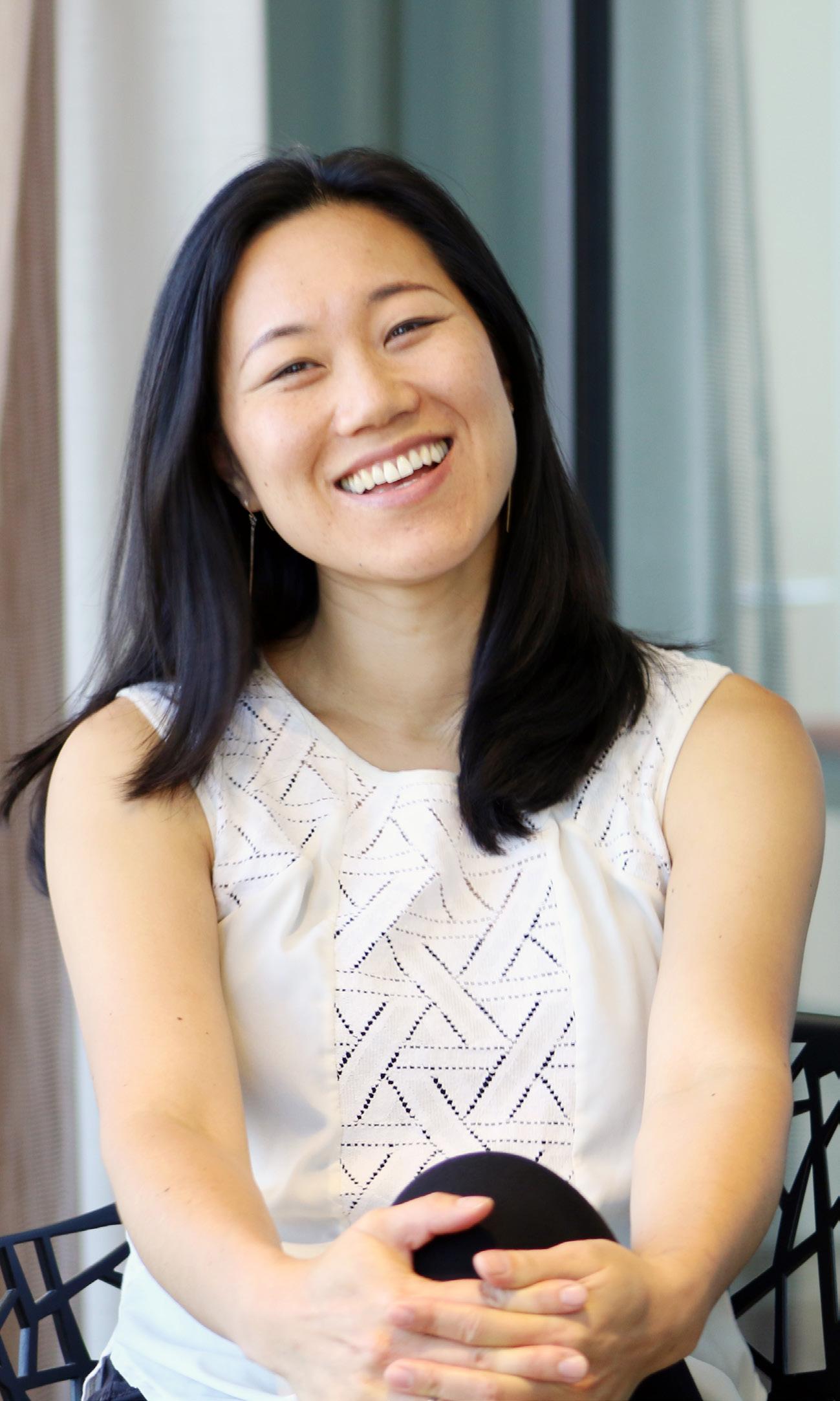
Identify a personal trait that has been an asset in your path to leadership. - Empathy
Identify a personal trait that may hinder your path to leadership. - Perfectionism
Briefly describe 1-2 key professional moments in your life that placed you in the leadership position that you are in today.
December 2007: Appointed an Associate Principal at KPF, NYC. This was my first professional recognition.
May 2016: Appointed a Studio Director at Gensler, Oakland. This broadened my mindset from design projects to design business.
Briefly describe 1-2 key personal moments in your life that impacted your path to leadership.
January 2014: Had my first child. Schedules, responsibilities, and priorities were instantly challenged.
August 2021: Relocated my entire family from the SF Bay Area to Rochester, NY (my husband’s home).
Were you always interested in pursuing a leadership/management role within the workplace? How does it differ from more traditional designer roles and how did you know it was fit for you?
I’ve always upheld high standards and believed that thoughtful, well-considered processes lead to better outcomes. Even before I fully recognized it myself, others noticed my natural desire to make order of chaos, streamline workflows, tailor communication styles to suit different audiences and contexts, and foster consensus. As a result, while I never actively sought managerial roles, I was consistently invited to step into various types of management and leadership positions throughout my career.
As you have grown into your leadership position, how do you find you have been treated differently than before? How have you been compelled to treat others differently due to your leadership role?
Hierarchy of roles shapes trust dynamics, both positively and negatively. Early in my career, I remember a junior designer questioning what qualified me to conduct their performance review. Years later, when I found myself leading individuals with twice my experience, I knew they were likely thinking the same thing. Over time, I learned that effective leadership isn’t about having “done it all before” or always “knowing the answers.” Instead, it’s about fostering trust from the outset. I now approach every interaction with the assumption that others bring unique value, and I see my role as helping them showcase their best talents.
How has your perception of the architecture profession evolved since you were a Syracuse Architecture student?
Twenty years ago, architecture was still an apprentice-based practice, where knowledge flowed from seasoned professionals to those with less experience, often leaving junior design roles feeling constrained. Today, with the rapid evolution of global challenges and unprecedented advancements in technology, the field has embraced a co-dependency across experience levels. Teams are now intentionally structured to be collaborative, and adaptive, blending proven experience with new methods and fresh perspectives.
Advice for students:
Don’t be afraid to trust your instincts. There is more than one right answer but you won’t know until you try it.
www.firstwash.com
Andrea Hidalgo has over 20 years of experience in mixed-use/retail, commercial, and federal buildings, with a concentration on design, construction and energy efficiency. Andrea’s specialty is creating innovative design solutions and leveraging data to maximize the strategic value and performance of real estate.
Andrea graduated from Syracuse University with a Bachelor’s of Architecture degree and received a Master’s in Engineering Management from the George Washington University.
First Washington Realty (FWR) is a fully integrated, national real estate investment and management firm that specializes in the ownership of convenience, necessity, and experience-oriented retail real estate.
FWR currently owns an interest in 144 shopping centers with a value of over $8.8 billion located in 22 states and the District of Columbia. Our shopping center real estate portfolio contains nearly 22.4 million square feet with approximately 3,700 tenants.
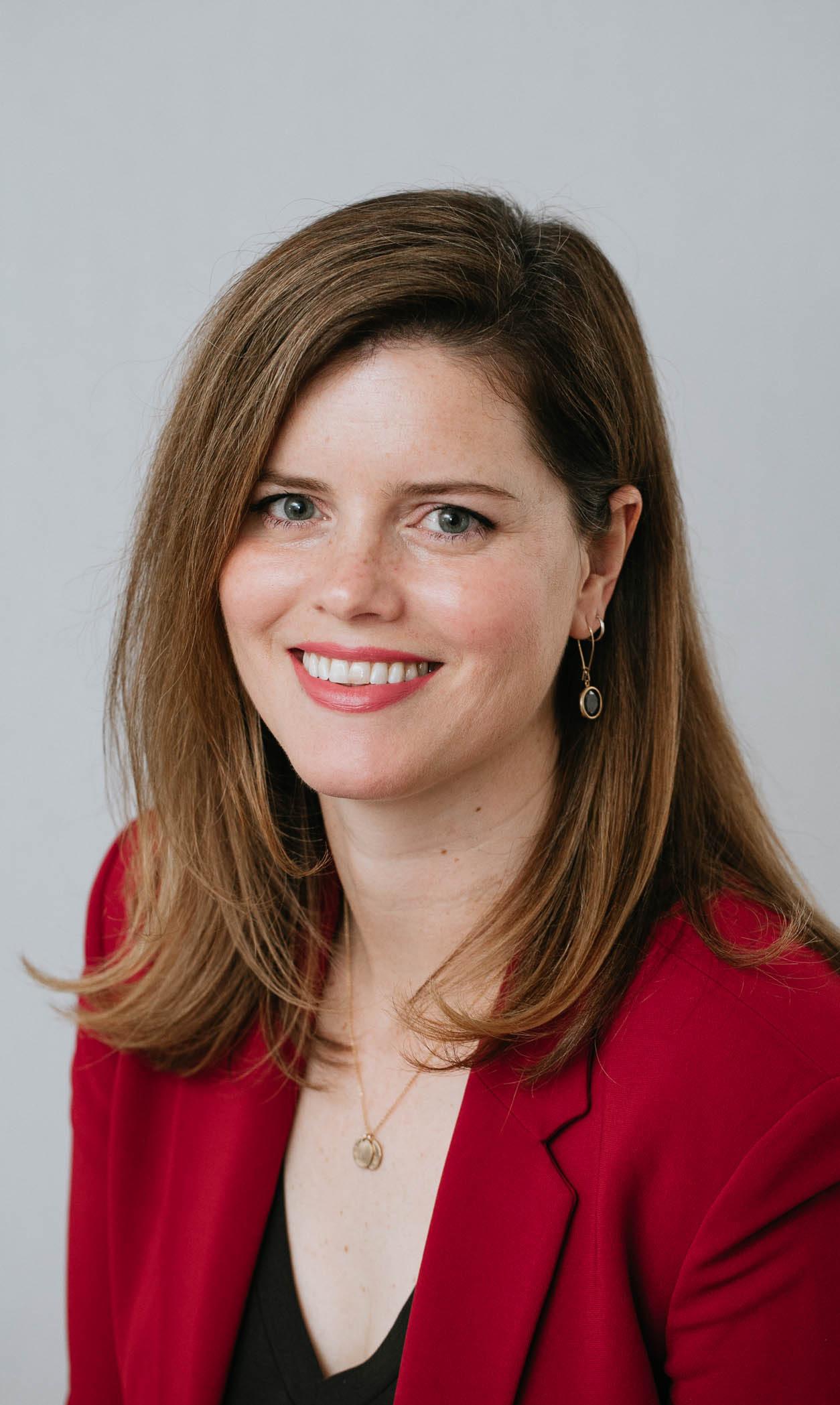


Identify a personal trait that has been an asset in your path to leadership. - Curiosity
Identify a personal trait that may hinder your path to leadership. - Impatience
Briefly describe 1-2 key professional moments in your life that placed you in the leadership position that you are in today.
When I was 19, I spent the summer working as a laborer doing interior demolition and hanging drywall. I wasn’t doing too well in my technical design class, and so I wanted to get some hands-on experience in the field. I worked side by side with laborers who took the time to teach me how to do things correctly and independently, even if it meant it took our team longer to complete the job. It taught me that elevating the people around you is the key to success.
I spent quite a few years working at a smart building prop-tech startup. In the beginning, we didn’t have anyone focused on technical business development, so I had to push myself to network and present at events. I learned to find my voice on panels and in front of large audiences. I discovered that being well-prepared and sharing my knowledge helped me feel more confident. This experience pushed me to develop skills that made it easier for me to communicate effectively.
Briefly describe 1-2 key personal moments in your life that impacted your path to leadership.
My husband made the decision to pursue his MBA and was accepted into a program out of state. I opted to remain in Washington, DC to focus on my career, which meant we could only see each other on weekends. Although it was challenging, this period in our lives required us to prioritize our professional aspirations in different ways.
When I was pregnant with my first child, I was at a startup that didn’t have a maternity leave policy in place. The CEO asked me to look into the local laws and come up with a policy that fit our company culture. I really liked the idea of laying the groundwork for a policy that would help my coworkers and their families.
What is the most rewarding part of being a woman in a leadership position?
One of the best things about being a woman in a leadership role is getting to mentor other women. Everyone has their own unique story, career aspirations, and interests. It brings me so much joy to support young women as they embark on their own journeys.
As you have grown into your leadership position, how do you find you have been treated differently than before? How have you been compelled to treat others differently due to your leadership role?
Early in my career, I worked in construction management for an architecture firm and spent most of my time on job sites. One day, I returned from the site feeling frustrated and shared my sentiments with a more experienced female colleague. I mentioned how the men there often dismissed me and my authority. She told me something that has always resonated with me: “When a man and a woman of the same age and experience enter a construction site, the man gets respect right away, while the woman has to earn it. But once she earns that respect, she will always have it.” Thankfully, times have changed and gender equality in the workplace continues to evolve. Women still have to navigate the workplace differently than men, but with more women in leadership roles today and companies setting the right culture, women are much better equipped to thrive in today’s environment.
Where do you see the greatest opportunities for improving and supporting women in reaching a leadership position in this field?
Women reach leadership positions when other women help to provide a roadmap to success. This means other women who have attained leadership positions reach down and pull up other women. This can be accomplished many ways, such as through mentorships, networking, education, and most importantly giving women the opportunity to step into leadership roles within their own company.
What advice would you give your 21-year-old self?
I would say when in doubt to always bet on yourself. Be confident in your conviction and surround yourself with people who want to help you succeed.
Principal
www.hoandlacy.com
Jackie Ho leads the curation and execution of Ho & Lacy Architecture’s overarching vision. Personally involved in every project from conception to completion, she assumes the roles of architect, advocate, interpreter, and confidant for each client. Originally from Macau, Jackie holds a Master of Architecture and a Master of Business Administration from Yale University, where she received the Sonia Albert Schimberg Prize, and a Bachelor of Architecture from Syracuse University. She is a licensed architect in California, New York, Minnesota, and Idaho.
With over 20 years of experience in architecture and design, Jackie has worked across residential, hospitality, cultural, recreational, and institutional sectors. Her portfolio includes projects in New York City, such as the Dream Downtown flagship hotel in Chelsea, and large-scale public projects for the City of San Francisco. She has also contributed to international design competitions at Patkau Architects, including the acclaimed Polygon Gallery in North Vancouver. Her work is characterized by elegant spaces, sophisticated details, and a bold design vision.
She co-edited Assembly: Post Digital Craft and her work (prior to starting Ho & Lacy Architecture with John) has been featured in publications such as Interior Design and Retrospecta. Her projects (again, this was before starting our practice) have received multiple awards, including three Design Citation Awards from the AIA and an Architectural Transformation Award from the Society of American Registered Architects.
Ho & Lacy established itself as a bespoke design studio in the highly competitive world of residential architecture and interior design. Based in the San Francisco Bay Area, the practice specializes in creating custom homes that are as personal as they are timeless.
Led by principals Jackie Ho, AIA, and John Lacy, AIA, the studio blends technical expertise, creativity, and a commitment to collaboration. Every project begins with a fresh perspective, drawing inspiration from the site and the homeowners’ lifestyle to craft spaces that are both functional and inspiring. What sets Ho & Lacy apart is their holistic approach—they manage both the architecture and interior design in-house, ensuring a seamless and cohesive process from concept to completion.
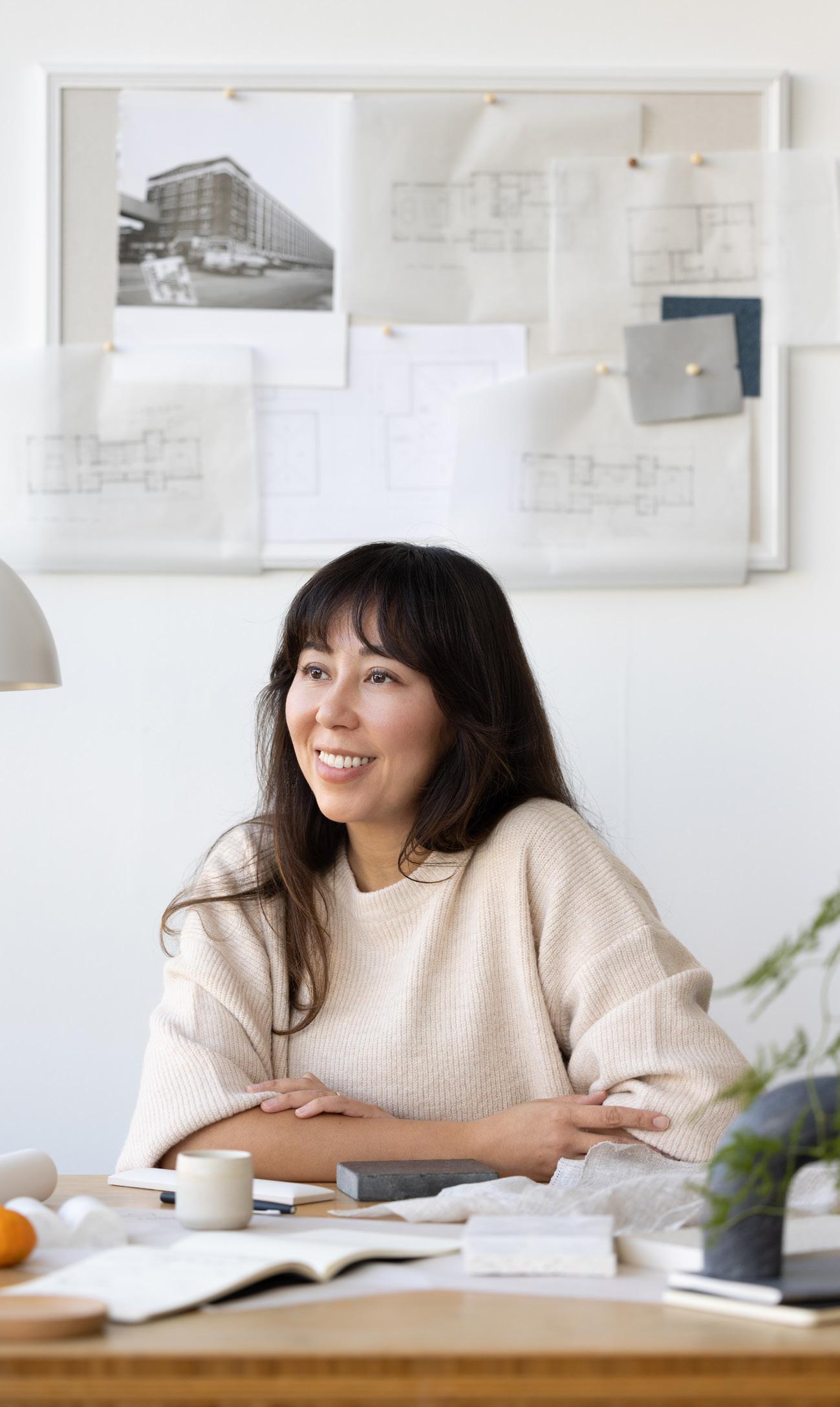



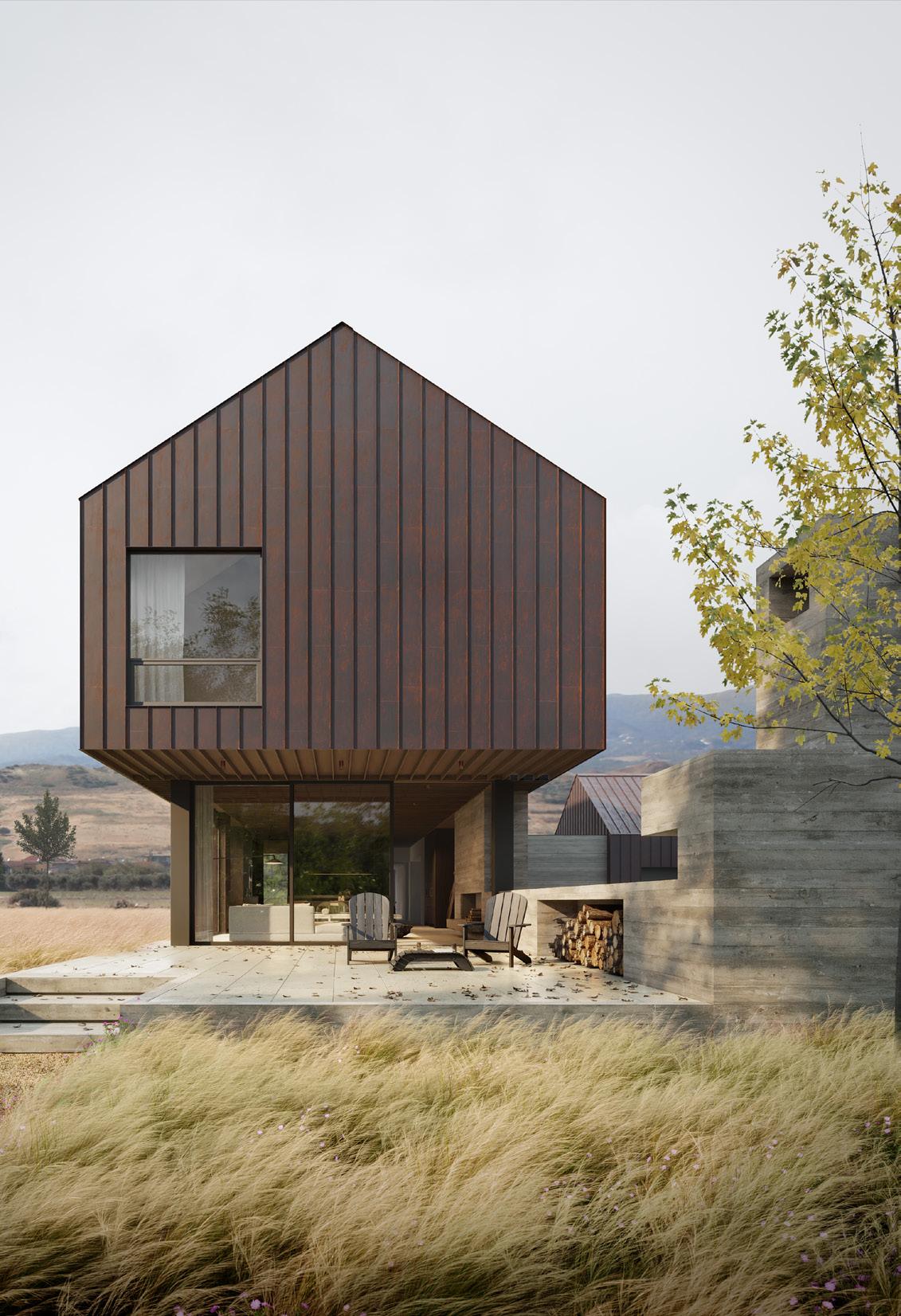
Identify a personal trait that has been an asset in your path to leadership. - Curiosity
Identify a personal trait that may hinder your path to leadership. - Cautiousness
Briefly describe 1-2 key professional moments in your life that placed you in the leadership position that you are in today.
Deciding to attend graduate school in 2010.
Accepting an offer to join Patkau Architects in 2013, and relocating to Vancouver BC.
Briefly describe 1-2 key personal moments in your life that impacted your path to leadership.
Deciding multiple times since graduation to pick up and move to another city/country, each time building a new social network from scratch — NYC (2004), New Haven (2010), Vancouver (2013), San Francisco (2016).
The birth of my son (2018).
What is the most rewarding part of being a woman in a leadership position?
One of my mentors, John Patkau, once told me, “You should only go out on your own if it’s the only way to do the work you want to do.” Knowing he disliked the business side of running a firm, I understood his words as a warning: starting a practice is a last resort because it’s so difficult. Yet, in that moment, I felt the opposite. The challenges he described—business strategy, leadership, shaping a practice—were exactly what excited me. I had seen firms of all sizes thrive and falter and had ideas for how a practice could be run differently. From that point on, nearly every decision I made was a step toward building my own design practice, where I could embrace both the creative and operational sides of architecture.
Were you always interested in pursuing a leadership/management role within the workplace? How does it differ from more traditional designer roles and how did you know it was fit for you?
As a young designer, I was intimidated by the responsibilities of leadership and focused on gaining experience and honing my skills. While I had inspiring role models in academia, I found the workplace lacking in this regard. I was often frustrated by poor decision-making or ineffective management. Over time, I began reframing these situations, telling myself, “That wasn’t the right approach—here’s how it could have been handled better.” This shift made me realize I had a genuine interest in leadership and a clear vision for how it could be done differently.
How has your perception of the architecture profession evolved since you were a Syracuse Architecture student?
As a young graduate, the field felt much smaller—there seemed to be only a handful of places, like NYC, London, or LA, where exciting architecture was being practiced. At the time, I believed we had to align ourselves with one of these big-name firms to make the most of our careers. Over time, I’ve come to see the profession as far more vast and diverse, with architects forging their own paths and finding unique ways to contribute to the built environment. I’ve also taken detours away from traditional practice, which broadened my perspective on what we can do with an architectural education. As a student, I saw scarcity; now, I feel a sense of abundance. The skillset we develop at Syracuse is incredibly powerful, making us adaptable and employable across industries. The real challenge isn’t about surviving the long hours or tight deadlines—it’s figuring out where we are most uniquely suited to contribute and what we truly want to do with those skills.
What do you look for when building a team and what characteristics make for an effective young leader?
I look for someone who doesn’t feel entirely qualified to lead but is eager to grow and learn. Curiosity is also essential—it takes courage to admit when you don’t have all the answers and to seek knowledge from others.
If there is anything else that you would like to share with students that wasn’t included in the questions above, please share it here.
If you think you deserve better—whether it’s pay, hours, benefits, or treatment—it’s because you do. The workplace can be tough, especially for a young employee. My advice would be to trust your instincts and listen to yourself, especially when your environment signals otherwise. Self-respect and self-advocacy are invaluable tools for navigating your early career.
www.smithgroup.com
I build creative design teams focused in retail and hospitality branded projects. I lead creative design teams to achieve successful results internally, for the client and within customer focused spaces. I mentor creative design teams to allow people to grow individually and realize collaborative team goals.



Identify a personal trait that has been an asset in your path to leadership. - Tenacity
Identify a personal trait that may hinder your path to leadership. - Femininity
Briefly describe 1-2 key professional moments in your life that placed you in the leadership position that you are in today.
The Great Recession was a struggle to find and keep a job because firms only wanted to hire architects for a project, then they would lay off everyone once drawings were done. It really hit my self-confidence, but I learned so much during this time. Truthfully I saw how poorly managed so many projects are and learned more from the bad examples. I saw that pushing people to work longer hours but never mentoring them to give them skills to be more efficient and thoughtful was the wrong way to work. I also saw architects undermining themselves by not pushing their expertise. Architects struggle at business management because we constantly give up space for others to take over in a niche as an expert.
Briefly describe 1-2 key personal moments in your life that impacted your path to leadership.
I started gymnastics at age 3, then played softball through high school, besides trying every other sport possible. I was a pitcher, so your team watches you closely. Your teammates will feed off your energy and confidence. You have to stay focused in that position and forget your last bad pitch, because the next pitch needs to be your best. I then volunteered to coach a grade school softball team in my early 20s. This was when I really recognized that I could be a leader and how to model behavior for a team. It also taught me that when your team does well that absolutely reflects on you. Lead your team to work together and do their best and your leadership skills will make you shine too.
How did you practice self-advocacy in the workplace as a young designer? How did you find balance between standing up for yourself and being vocal about your personal career goals versus knowing when to step back and be patient?
I was told I don’t speak up enough during meetings, despite wanting to listen and not shout out the first thing that is in my head. I’ve then been at yelled at to stop interrupting because it was the only way I felt that I could jump into the conversation. No matter what you will be judged based on your gender and age, but don’t stop being you. Talk to other women so that when you are in meetings you can advocate for one another. There’s room for more than one woman in a room, so we need to advocate with and for each other.
What is the most rewarding part of being a woman in a leadership position?
When I lead a team I always think of it first as mentoring. There is nothing more rewarding than seeing people grow in their roles and gain more confidence. If the people I hire become licensed architects, design beautiful spaces, manage teams, or are generally successful in their own career then I know I have helped them to see what they could accomplish.
How has your perception of the architecture profession evolved since you were a Syracuse Architecture student?
I now see architecture as a profession in decline. Not only do architects cede their expertise to others, but they have not advocated for themselves or for change. Schools graduate women in near parity with men, but women still are only 20% of licensed architects. Where I once saw opportunity in my profession I now see the struggle it is to get to a leadership position because firms are still run the same way by the same people. But I will not stop pushing and advocating for change, that’s the optimist in me that won’t give up.
What advice would you give your 21-year-old self?
Have more confidence in yourself now. You’re smart, observant, thoughtful and people ask you for advice. That shows they trust you and think highly of you.
Don’t ask for permission, ask for forgiveness. But if you do something new and it’s a great idea, then you won’t need to ask for either!
www.ewingcole.com
Barbara is an experienced architect in the Government, Sports and Entertainment, and Academic Practices. As a principal, she focuses on project leadership, planning, construction documentation, and project delivery. She is actively involved in successfully leading and managing some of the firm’s most significant and technically complicated projects.
Engaging the client, design team, and consultants is her top priority to foster an inspirational and collaborative environment. Managing a multi-disciplinary team, she enjoys working hand-in-hand with the engineering team to create a sophisticated and well-integrated building.
Barbara joined EwingCole in 2004 and holds a Minor in Management and a Bachelor of Architecture from Syracuse University and is a LEED Accredited Professional.
EwingCole, in practice for over 60 years, is a nationally recognized, fully integrated architecture, engineering, interior design, and planning firm of more than 475 professionals in Atlanta, GA, Baltimore, MD, Charlotte, NC, Fort Worth, TX, Irvine, CA, New York, NY, Philadelphia, PA, Pittsburgh, PA, Raleigh, NC, San Diego, CA, and Wayne, PA. Our multidisciplinary practice is built on the core values of professional excellence, design quality, and collaboration. Our goal is to provide the best total solution for our clients, the community, and the environment. Key practices include Cultural, Education, Government, Health & Wellness, Science & Technology, Sports & Entertainment, and Workplace.
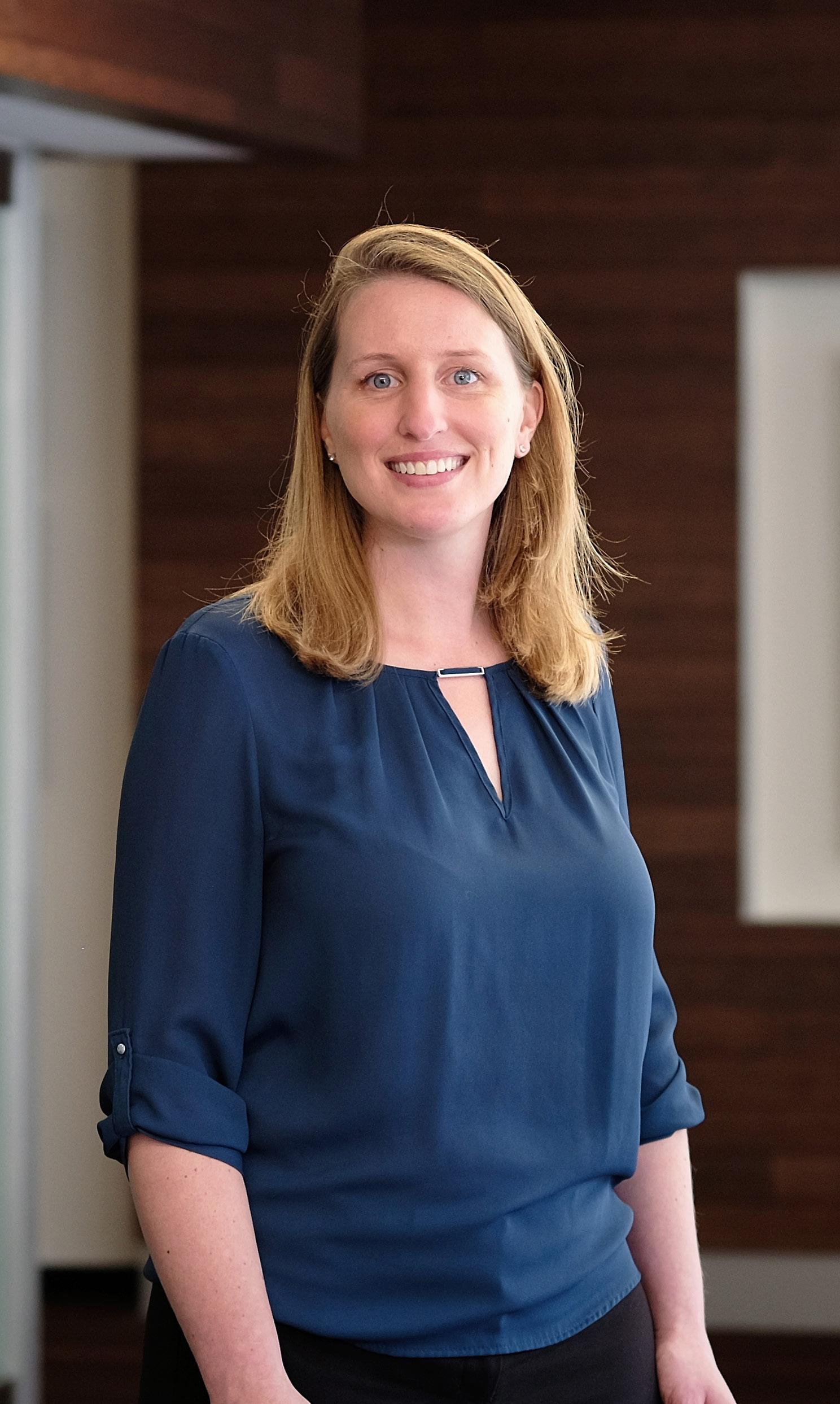


Identify a personal trait that has been an asset in your path to leadership. - Responsibility
Identify a personal trait that may hinder your path to leadership. - Confidence
Briefly describe 1-2 key professional moments in your life that placed you in the leadership position that you are in today.
2011: Reviewing Shop Drawings for the PNC Field Baseball Stadium – the structural shop drawings showed the tabs that tie back the masonry walls. Shop drawings for each material from each company are separate drawings and might be reviewed months apart. It was not noticed in the shop drawing that the dimension from the tabs to the masonry was off. The structural engineer did not pick it up, I didn’t pick it up, the contractor did not pick it up. It wasn’t until the masonry walls were laid out and it was identified that the tabs and walls were not aligned. The key to this issue was that when an error occurs, you come up with a solution to resolve it. You don’t try to cover it up, you work with the contractor. Here we collaborated on a solution to extend the tabs, welding another angle.
2023: I was working on Cullum Hall at West Point – McKim, Mead, White building built in 1895 and we were renovating it to put in a new archive and large file format facility. Working day to day on the project, I know the ins and outs of the design, but I was asked to present the project to the Executive Committee at EwingCole. I could have said I’m not interested, but I accepted the request and pulled together key members on the team, and we prepared the presentation and presented in front of the executive board and other members of EwingCole. It is vital to push yourself out of your comfort zone and accept challenges. Our president at EwingCole once said, 90% of success is just showing up.
Briefly describe 1-2 key personal moments in your life that impacted your path to leadership.
In 2005, I participated in a design competition outside of work – Dane Décor Window Competition. I had to design a storeroom window display for the Scandinavian furniture showroom. I did not come in 1st. First place got to actually build the design with the store. I received 2nd - runner up. If there were any issues in building the first-place display, then I was on deck. While I didn’t get to build the display, it was something that I shared about with colleagues and put in my annual review.
In 2006, I worked with a coworker on design competition outside of work - the Athens Area Arts Council Bus Design Competition. It was creative and fun and built a connection with the colleague, whom I still work with today. In 2008, I led a charity event for our company – Canstruction. It was a lot of work pulling it together. We had to collect donations or canned food. Then with the we shopped/bought canned goods and together with the donated canned food we brought all the cans to the large lobby of a downtown Philly skyscraper, where we had to assemble the cans (hundreds of them) into a sculpture. We did a lot of prep beforehand, coming up with a conceptual sculpture design that meant something to the charity, finding cans that would be the color that was needed, but also be food that was beneficial, then we tested out the stacking of cans, we even laid out the layers of cans in CAD. We ended up taking home First Place that year and Juror’s favorite. These personal moments where I worked on activities/competitions outside of work do impact the path to leadership.
Were you always interested in pursuing a leadership/management role within the workplace? How does it differ from more traditional designer roles and how did you know it was fit for you?
Pursuing a leadership/management role
I did not know I wanted a management role. It came to a head during my review, when my supervisor asked me where do I see myself in 5 years, and which path am I going to take. I could go towards designer, project architect, QA or project management. Project management was the right fit for me – see the whole picture, know the expertise of the other paths, really understand how to make them all work together. It differs from a more traditional designer role because in project management we support the design vision, and encourage it, but I’m not in it everyday. Having worked on the design side, I know how challenging yet exciting it can be, but if I didn’t have that experience, I don’t think I would have had the understanding, therefore I wouldn’t be able to encourage and support it as well.
What are the key leadership skills you believe every woman should develop to succeed in her career?
Responsibility, Ownership, Accountability, Reliable, Commitment, Communication, Be clear, Listen, Determination, Discipline, Follow Through, Inspire others, Empower others, Work well with others, Collaboration, Teamwork
www.eskwarchitects.com
Raised in Morton Grove, Illinois, just outside Chicago, Winnie Moy developed her architectural sensibilities through frequent visits to the city’s historic and richly layered built environment. Since joining ESKW/Architects (ESKW/A) in 2018, Winnie has become a vital contributor to the firm’s affordable and supportive housing projects. She began her journey at the firm on the 3500 Park Avenue construction administration team, where she quickly mastered the intricacies of this impactful sector. Drawing on her expertise in historic architecture, Winnie is currently the project manager for the adaptive reuse project, Barbara Kleiman Men’s Shelter, the fit-out and renovation of Beginning with Children Community High School and the new construction project, Baez Place—a 134,000 SF, affordable, supportive, and senior housing project.
Winnie is also a leader within ESKW/A’s Justice, Equity, Diversity, and Inclusivity (JEDI) committee, where she has led client interviews and community outreach initiatives, advancing the firm’s commitment to equitable design. Her passion for sustainability drives her involvement with the office’s sustainability group, where she helps integrate the latest sustainable practices, materials, and standards into the firm’s work.
Founded in 1960 by Judith and Harold Edelman, ESKW/ Architects (ESKW/A) is an award-winning, New York City-based practice presently led by Partners Andrew Knox, FAIA, Randy Wood, AIA, and Kimberly Murphy, AIA. ESKW/A has over 60 years of experience in NYC’s design and construction industry. Continuing our founders’ lifelong dedication to the public sector, we pride ourselves on being a service-based practice that partners with missiondriven non-profits, institutions, and government agencies to develop practical, yet innovative designs that provide shelter, education, healthcare, and culture for all New Yorkers.
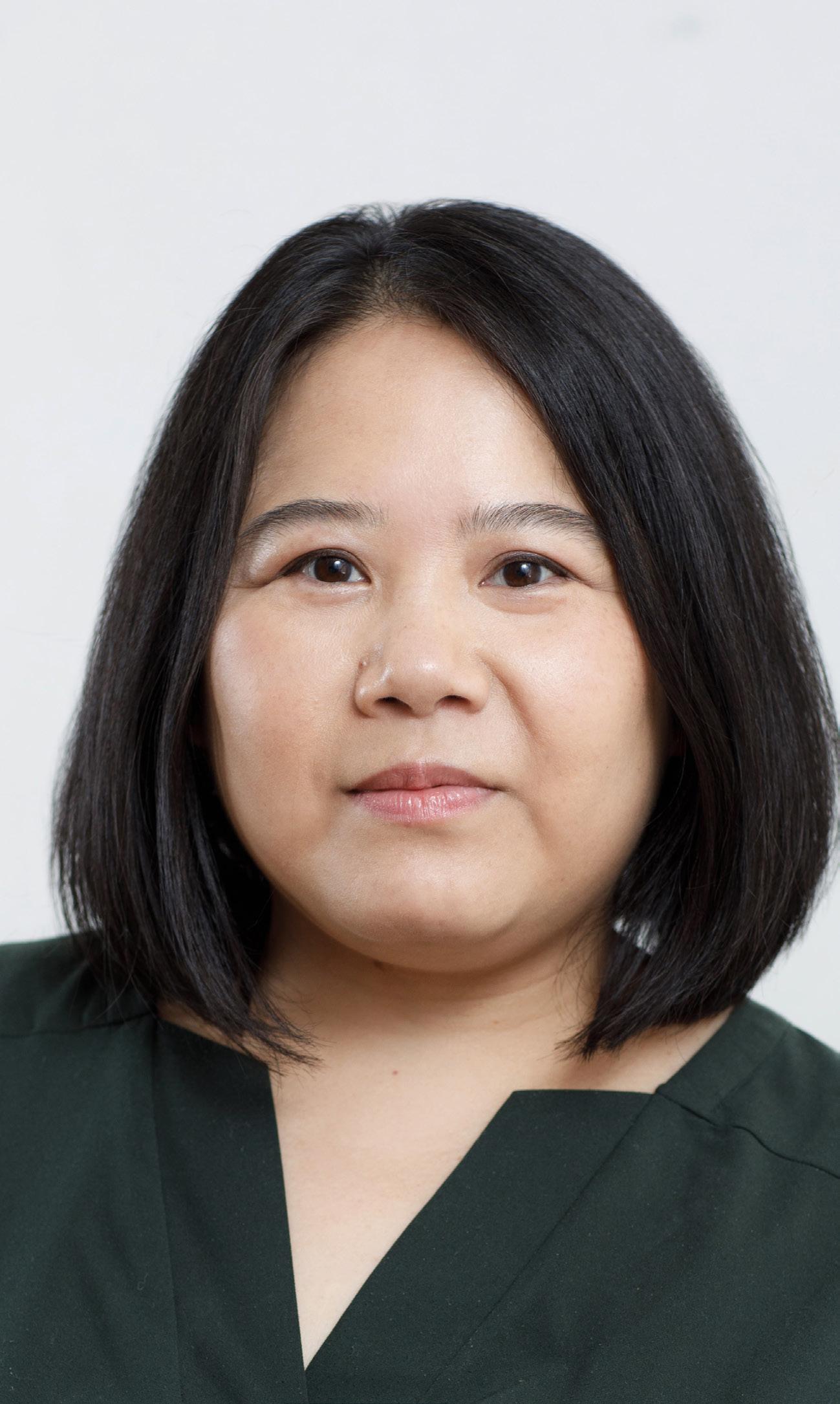
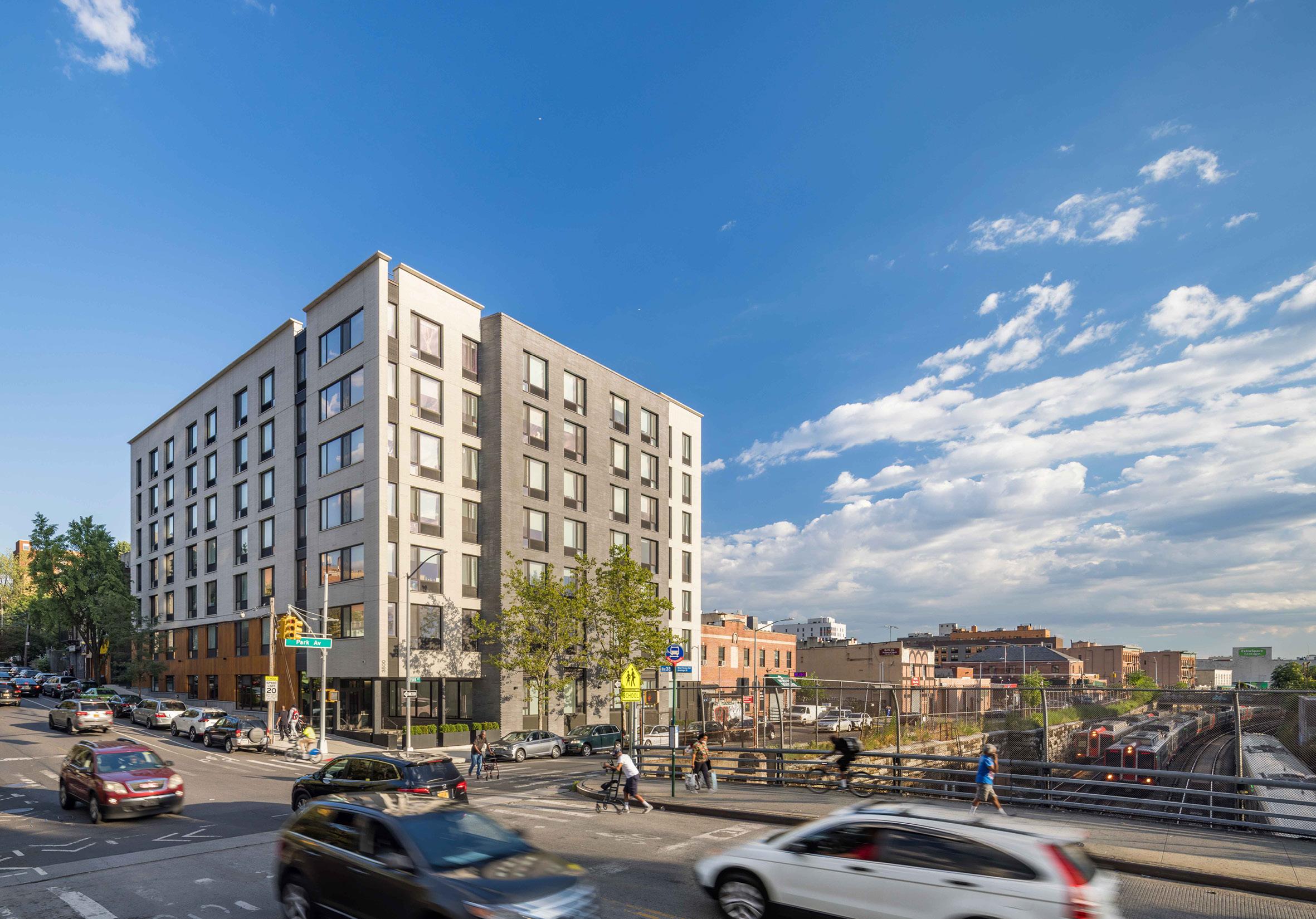

Identify a personal trait that has been an asset in your path to leadership. - Dedicated
Identify a personal trait that may hinder your path to leadership. - Even-tempered
Briefly describe 1-2 key professional moments in your life that placed you in the leadership position that you are in today.
Working at Vincent Benic Architect and learning many aspects of being an architect in a small firm setting.
Becoming a registered architect and passing the AREs.
Briefly describe 1-2 key personal moments in your life that impacted your path to leadership.
Maintaining a long term relationship and getting married.
What is the most rewarding part of being a woman in a leadership position?
One of the most rewarding part of being a woman in a leadership position is being a resource for and working with younger women in the field. While I am able to share my experience and knowledge with younger designers, it is also very inspiring to learn about their point of view and design interests. Whether it’s teaching young architects in the office or interviewing student designers, those experiences are always very rewarding.
How did you practice self-advocacy in the workplace as a young designer? How did you find balance between standing up for yourself and being vocal about your personal career goals versus knowing when to step back and be patient?
Generally, I think I am a straightforward person and I have been lucky to have supportive employers. I have had to educate employers about my lived experience as an asian-american women which I felt able to do because of that open relationship. I would encourage young designers to always stand up for themselves in that regard. In terms of career goals, I try to be indispensable and proactive to become the leader the firm needs. I have tried to focus more on the work and improving as an architect and leader. However having the confidence to ask for what you want and often deserve is important.
How has your perception of the architecture profession evolved since you were a Syracuse Architecture student?
As a student I was trying to learn the skills to become a good designer and do well in my classes, but the real life impact architecture has was often not front of mind. After practicing as an architect and serving mission based Clients, the work we do as architects is more than form and function. The choices we make can impact people’s health to the building’s energy usage and the type of work we do can make a huge difference in a person’s life.
What do you look for when building a team and what characteristics make for an effective young leader?
I often look for team members that are thorough, organized, proactive, thoughtful and hard working. While young leaders may not have all of the experience or knowledge, being able to ask questions, look for the answers and communicate well with your team are important skills to have.
www.charrettevg.com
Erin is a purpose-driven and collaborative leader with a passion for helping architects succeed. She brings broad experience in leadership and staff development, project management, and strategic planning to her Senior Management Consultant role at CVG.
Prior to joining CVG, Erin spent a decade at the American Institute of Architects (AIA). In her role as the Senior Director of Workforce Development and Strategy at the AIA, she advocated for emerging and mid-career architects. She also led the team that conceptualized the AIA’s ARE-prep program (ArchiPrep), the association’s first mission-driven product serving emerging professionals. She transformed the AIA’s Women’s Leadership Summit into the largest event for women in architecture while also stabilizing the business model to become revenue-neutral for the first time. Erin also contributed to the AIA’s Guides for Equitable Practice, an in-depth resource for architecture firms to advance equitable and inclusive policies and behaviors within their businesses.
Erin spent the first half of her nearly 20-year career as a practicing architect in New York City and Washington, DC. She holds a Bachelor of Architecture from Syracuse University. Erin is based in Arlington, Virginia.
CVG’s mission is to help architecture firms become better businesses. We provide financial management, leadership development, marketing and business development, organizational design, ownership transition advisory services, recruitment, and other critical business infrastructure. When our clients want to strengthen their business acumen, CVG executes a plan for change and growth. Our impact is not only on the firm and its financial picture; but also on the lives of firm owners and employees.
CVG is comprised of a team of international experts from the architecture and business fields of practice. As a locationindependent firm, we work together from different cities to advise small architectural firms across the U.S. and beyond.



Identify a personal trait that has been an asset in your path to leadership. - Intentional
Identify a personal trait that may hinder your path to leadership. - Inflexible
Briefly describe 1-2 key professional moments in your life that placed you in the leadership position that you are in today.
2007: Became a licensed architect at age 26 - My license helped me stay employed throughout the Great Recession of 2009. It was an asset to have my license when most of my peers did not, so I was never laid off and was able to find a new job when I relocated mid-recession.
2011: Left traditional architectural practice - It was tough to work in an architecture firm during the Great Recession, so I decided to try something different and work at AIA National. It was a shift away from design, but I have never looked back. I am on my third architecture-related career now, and I hope to have a fourth at some point.
Briefly describe 1-2 key personal moments in your life that impacted your path to leadership.
2022: Decided to leave a job that I loved because there was no growth opportunity. I learned the tough lesson that if my boss didn’t see me in a different role, then I was never going to be in a different role. I had no choice but to move on and find an organization that would support my continued career growth.
Share a defining moment in your career journey that shaped your approach to leadership.
I was hired to staff a new academic project at a firm, and spent most of my time on programming, design, and administrative support for over a year. When the partner I worked with was pulled onto a new project, and another staff member departed, I was the only option to become the project manager. I didn’t really know what I was doing, but I was organized and proactive with communication, and I successfully managed a team of multiple consultants and clients. Most importantly, the opportunity gave me the confidence to lead projects and made me more comfortable with learning and doing new things.
Were you always interested in pursuing a leadership/management role within the workplace? How does it differ from more traditional designer roles and how did you know it was fit for you?
Looking back, it is pretty obvious that I was a natural project manager rather than a designer. I managed my time and deliverables to have a comprehensive thesis with no all-nighters required. In practice, I hated working overtime, so if I was the project manager, I could influence schedules and staffing to limit the amount of overtime that was required. I have not missed architectural design, but I have always found ways to be creative while at work.
How has your perception of the architecture profession evolved since you were a Syracuse Architecture student?
When I was a student, I thought my only option as an architect was to be a designer in an architecture firm. I have figured out how to remain an architect while working in related industries, but it has not been easy to transition between careers outside of traditional practice. It has taken me additional time and effort, and a little luck, to find my path as an architect. Often, the harshest critics of my career choices are other architects, which I hope will change as the profession becomes more inclusive.
What advice would you give your 21-year-old self?
Say “yes” to all of the opportunities that you have, even if you don’t quite know what you’re doing. Have confidence in yourself that you can figure it out and it will be a great way to learn something new. Until you actually try something (maybe more than once) you won’t know if you are really good at it.
www.arch11.com
Linnaea joined Arch11 after moving to Colorado from Boston, Massachusetts, where she is a licensed architect. Her architectural education began at Syracuse University as an undergraduate and continued at Harvard University Graduate School of Design, where she earned a post-professional master’s degree in 2009. Her work was recognized and awarded at both schools for the best undergraduate thesis and the highest academic achievement in her graduate class.
With an interest in searching for unique projects in her field, Linnaea’s work has focused on the design and construction of cultural landmarks, including the Whitney Museum of American Art in New York City, the Ethelbert Cooper Gallery of African American Art in Cambridge, Massachusetts, the Princeton University Theological Seminary Library in New Jersey, and Wild Bear Nature Center a new net-positive education center in Nederland, Colorado.
Linnaea has honed her skills as an architect and project manager through her collaborations with leading architecture firms. She thrives in environments that balance the aspirational goals of visionary design with the practical realities of high-quality construction. Linnaea’s passion lies in turning great ideas into tangible, built realities driven by thoughtful collaboration, meticulous attention to detail, and creative problem-solving.
At Arch11, we believe architecture is a wildly specific art revealing meaning between space, place, and people. The result of our work is threefold: spaces highly connected to their place, artfully and exceptionally crafted, and good for the planet. Over 30 years, Arch11 has delivered architectural projects across North America and beyond. The residential, commercial, and institutional works of our award-winning practice reflect our dedication to design excellence at every scale.
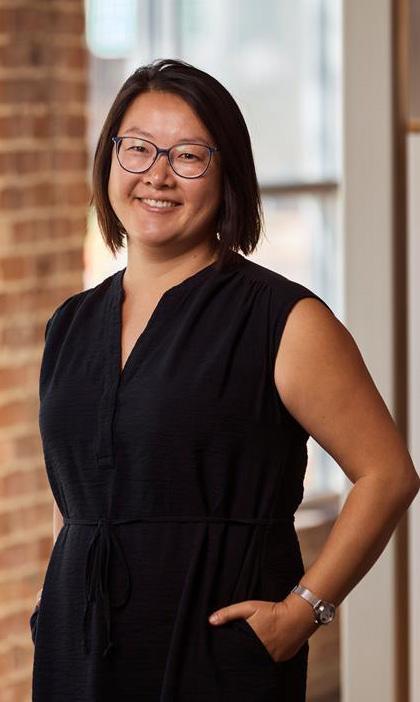
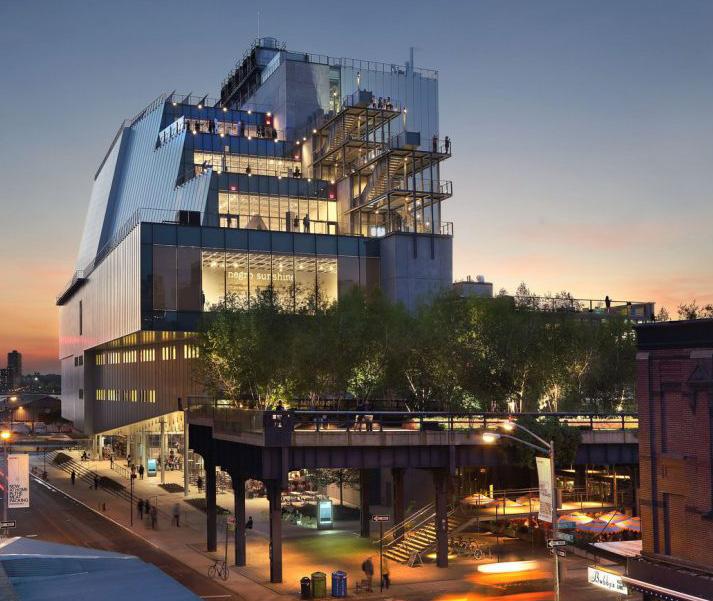
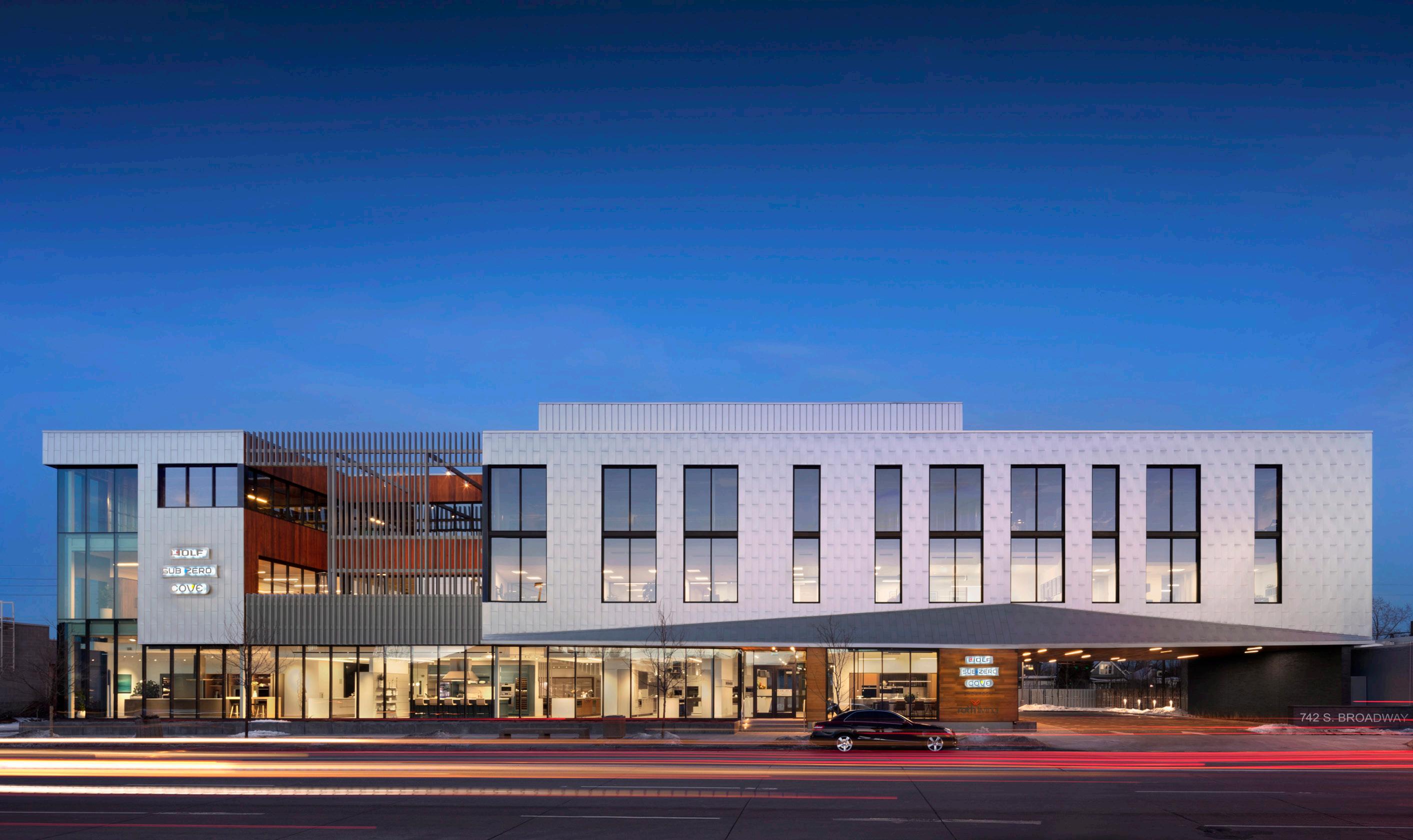
Identify a personal trait that has been an asset in your path to leadership. - Disciplined
Identify a personal trait that may hinder your path to leadership. - Impatient
Briefly describe 1-2 key professional moments in your life that placed you in the leadership position that you are in today.
2013: With the unexpected death of a key project supervisor, I was placed in a critical leadership position to complete the construction of a complex façade for an art gallery. Through this experience, I learned how to lead with clarity, precision, and resourcefulness while also showing great appreciation and respect towards the craftsman doing their job under such unusual and tragic circumstances.
Briefly describe 1-2 key personal moments in your life that impacted your path to leadership.
2014: Witnessing a loved one’s accident and traumatic brain injury resulted in my leaving the profession for eighteen months to participate in their rehabilitation and recovery. This time also allowed for personal growth and perspective that have certainly affected the way in which I lead and work with others now.
Share a defining moment in your career journey that shaped your approach to leadership.
Becoming a principal changed many of my relationships with other colleagues in the office as it resulted in a shift in previous friendships that had developed over the years as I was now participating in their performance reviews and participating in larger conversations about the organization. For me, maintaining an attitude of empathy with your colleagues has been the best way to inject humanity into this leadership role.
As you have grown into your leadership position, how do you find you have been treated differently than before? How have you been compelled to treat others differently due to your leadership role?
During the first half of my career, I experienced (mostly) fair and equal opportunities to grow in this profession as it was based on my abilities and ambitions. As a leader, I have found that my age, race, or gender can make it more challenging to gain trust between owners, colleagues, or stakeholders if this is the first time they are seeing someone like me in that position. Lately, I’ve grown increasingly aware of the cultural and historical contexts that have resulted in these biases in our profession from the last 250+ years and I’m curious to know if my peers have encountered similar moments of subtle or overt prejudices. In terms of treating others differently, there must be a constant sense of optimism and curiosity in our behavior towards each other. We must walk into every situation with a belief that we ARE welcome and that we HAVE earned our seat at the table while also acknowledging that everyone else has earned theirs too. We may be disappointed later and that is ok.
How has your perception of the architecture profession evolved since you were a Syracuse Architecture student?
Being a great designer will not necessarily make you a great practicing architect and there is rarely a single individual who is exceptional in all areas of this practice to go it alone. Appreciating the many skills and personalities of your classmates now may make for a successful network of colleagues and resources later. Be nice to your classmates – you never know when you will need them later.
What do you look for when building a team and what characteristics make for an effective young leader?
Being empathetic and self-aware of your strengths and weaknesses will allow you to be more effective in all areas of leadership. Asking a trusted friend or colleague how they experience you and then listening to them with openness and a willingness to adjust your methods, assumptions, or behavior could be one step in becoming a stronger leader.
Previously worked at Pelli Clarke Pelli Architects Japan, Shimizu Corporation, and briefly studied abroad at King’s College London; Classical Studies Hellenism. Also worked with Ryuhei Kawada, a member of the House of Councillors, The National Diet of Japan along with the Ministry of Health Labour Welfare and Ministry of Education Culture Sports Science Technology, on accusation of clinical research fraud, Conflict of Interests COI, as a victim of clinical research subject at University Hospital and divesting medical doctors of Ph.D and leading the Clinical Trials Act (Act No.16 of April 14, 2017) to pass in the Diet. And worked at Nikken Sekkei Construction Management. Now works as an independant consultant.
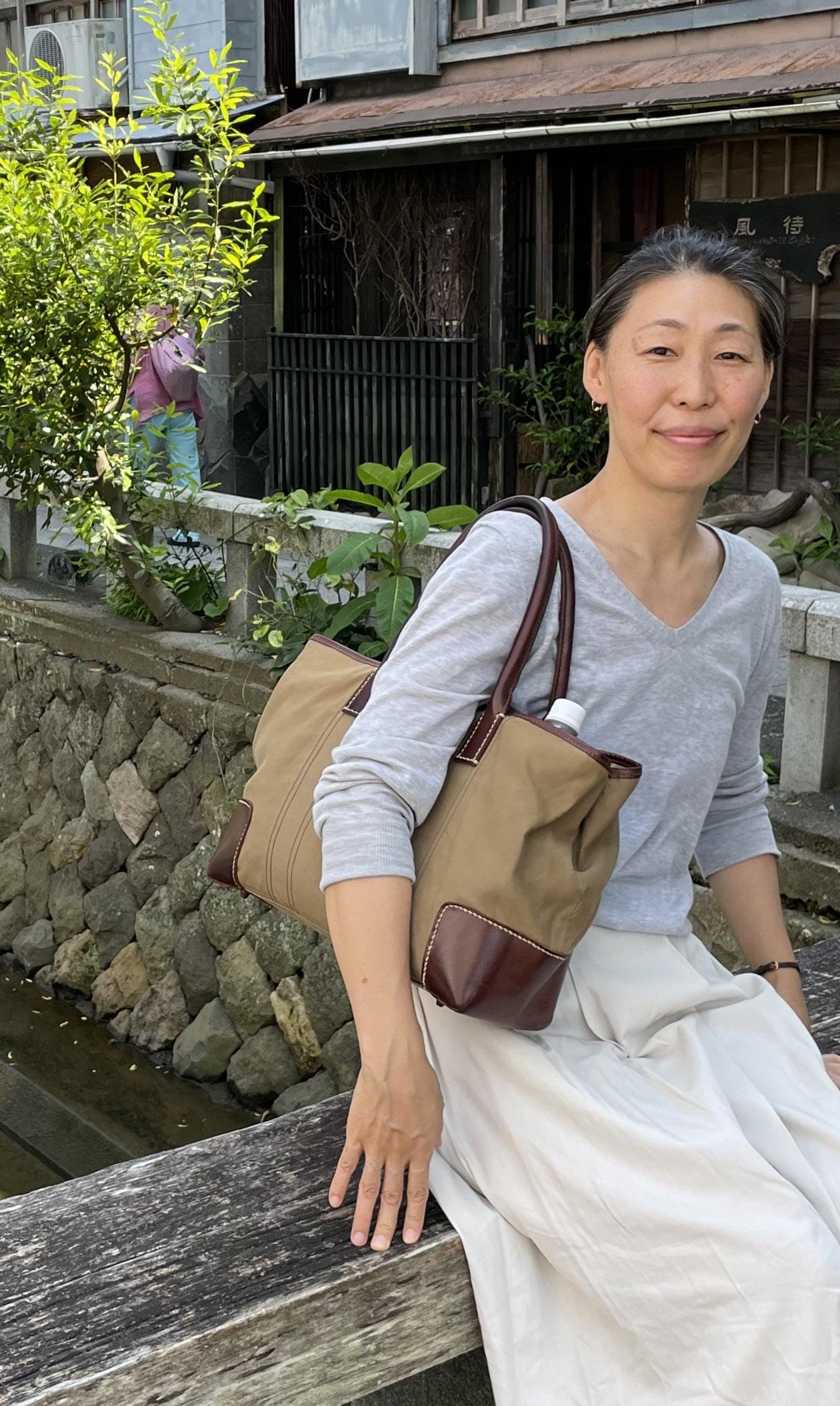

Briefly describe 1-2 key professional moments in your life that placed you in the leadership position that you are in today.
It was January 2011 when I had to quit my job due to a mental health issue. I was very ill and could barely move, lying on the bed most of the time and crawling on the floor just to go to the bathroom for the next five years. It was because of the medication I was taking, which I later found out was an absolutely unnecessary prescription, given to me for a fraud clinical trial I was asked to participate in by a male associate professor in the psychiatric department at a university hospital. This was for a woman medical doctor’s PhD dissertation under his supervision, and he apparently took a bribe from a pharmaceutical company that aimed to use the unreliable research paper as an advertisement to find a new market for their product. This is not only clinical study fraud but also illegal acquisition of PhD and Conflict of Interest between medical doctors and the pharmaceutical company—a highly controversial issue universally in the medical world. If interested, please refer to “The Truth About the Drug Companies” by Dr. Marcia Angell, two-decade former chief editor of The New England Journal of Medicine.
It was March 2015 when I saw news on TV about a psychiatric department in the university hospital committing a crime of illegal acquisition of national qualification in mental health licensing exam, forging exam reports. At that time, I was not with them, as I had transferred to a smaller clinic. I became very suspicious about the clinical trial I participated in and the medicine I was taking. I contacted Ryuhei Kawada, a member of the House of Councilors, who introduced me to a medical doctor expert on medical ethics. He showed me the Declaration of Helsinki by the World Medical Association. I started accusing the university hospital of clinical research fraud, which led to the termination of the clinical trial and eventually the Clinical Trials Act of 2017. Through this ordeal, I learned the crucial importance of continuous learning and seeking morally right, legitimate advice. Because of my architectural background, I could quickly grasp the heart of the Declaration of Helsinki, and that strong notion gave me a clear vision to keep fighting against all obstacles.
Identify a personal trait that has been an asset in your path to leadership. - Conscientious Exploration
Identify a personal trait that may hinder your path to leadership. - Egoistic
Briefly describe 1-2 key personal moments in your life that impacted your path to leadership.
Around 2014 I started gardening for my recovery from the sickness. It was such an eye-opening joy to see great diversity in plants in different regions and watch them grow, flower and fruit. I always have a great time creating a space with plants in contrast to architecture as well. With that hands-on experience on cultivating the land, growing foods and harvesting, and creating spaces through the garden, I have better and deeper understanding of important essential part of humanity and its surroundings. It is a great joy for everyone on the earth.
How did you practice self-advocacy in the workplace as a young designer? How did you find balance between standing up for yourself and being vocal about your personal career goals versus knowing when to step back and be patient?
Looking back, I probably learned the base for self-advocacy through my childhood. I loved dancing and took classic ballet classes quite a while where women traditionally play a leading part and men take a supporting part. I also grew up by hearing the Confucius phrases from elders in Japan. I liked watching, not so much playing, a shogi tournament, a Japanese chess game, on TV Sunday mornings.
What is the most rewarding part of being a woman in a leadership position?
We have a softer impression or image with little more elegance and mother-nature grandeur and cheerfulness than that of men’s naturally. People can understand have access to from subtle smile to hearty laugh with a little hint of nice warm home-made chicken needle soup feel attached to it, but at the same time we are high skilled disciplined thinker and worker with greater flexibility and strength perhaps as a rapier rather than a sword in a manner of speaking.
What are the key leadership skills you believe every woman should develop to succeed in her career?
It is perhaps less emphasized and too blunt in architects’ mind but we are also required to be conscious of building cost/price and its economy. We should not let it take a power over us, but we maintain a good sense to take it under control instead. We have to balance between design and cost every single time. Needless to say, architecture is quite expensive. Something I always like to have in my mind is the 18th Century great English landscape garden designer Humphry Repton’s three principles in his famous Red Book following clients’ priorities 1st economy, 2nd convenience, and 3rd certain degree of magnificence. Another thing is knowing the construction/manufacture work. It would be a great advantage knowing it just like a good orchestra conductor knows every single note when and how it is played as a whole. You are better composer because you are conductor, and vice versa.
What advice would you give your 21-year-old self?
Learn to work and work through with other people by communicating well with your clearer mind than anyone towards the architecture and the world. Stay healthy, you need not only to have a right and strong mind-set, but also physical strength of Olympic athlete. When economy is bad things get tight and ugly, so be careful. It is too hard, but it’s certainly worth a try.
I somehow subconsciously had SUOS CULTORES SCIENTIA CORONAT “Knowledge crowns to those who seek her” in my mind. That alone, no doubt, has a great power but it isn’t complete by itself in my view. However, when you keep learning and learning from practicing hard in the world, and with that true knowledge with true to your heart as well as true to people’s heart thought through concept or the spirit, would just give you a whole different level of greater power. It is The key to an absolute power to communicate something internally with people making things happen in the reality. It withstand the test of time. It endures severe winter snow storm just like Slocum Hall. Subsequently to unlocking the power of motto, it comes to my mind every now and then, it is called the Art and Science.
Thank you!
We would like to express our sincere gratitude to all those who contributed to this project. We are deeply thankful for your support and involvement.
Alumni
Lesha Blair
Natasha Coyle
Heather Fraser
Robyn Bell Gentile
Erica Stahl Golden
Laura Klock Herbert
Lauren Hibner
Andrea Hidalgo
Jackie Ho
Pamela Howell
Barbara Kolonauski
Winnie Moy
Erin Murphy
Linnaea Stuart
Madoka Yuasa
Todd B. Rubin
WID and NOMAS Students
Eva Michaels
Isabela Santana
Yilin (Yolanda) Zhang
Sansiri Saensopa
Ella Dea Robertson
Anisa Chan
University Faculty and Staff
Lori Brown - Moderator
Kristen DeWolf
Colleen Oliva
We shall not cease from exploration And the end of all our exploring Will be to arrive where we started And know the place for the first time.
- TS Eliot
